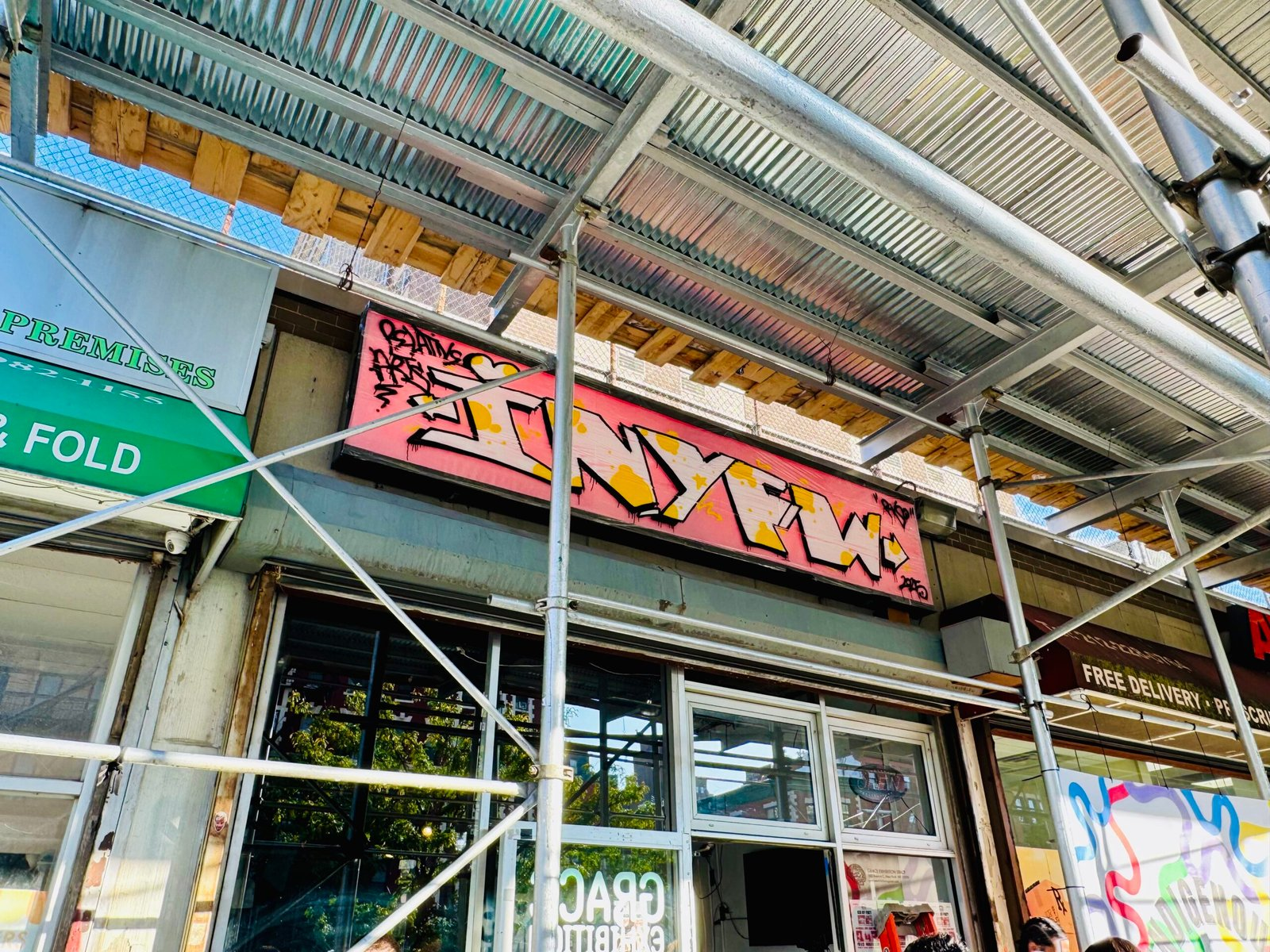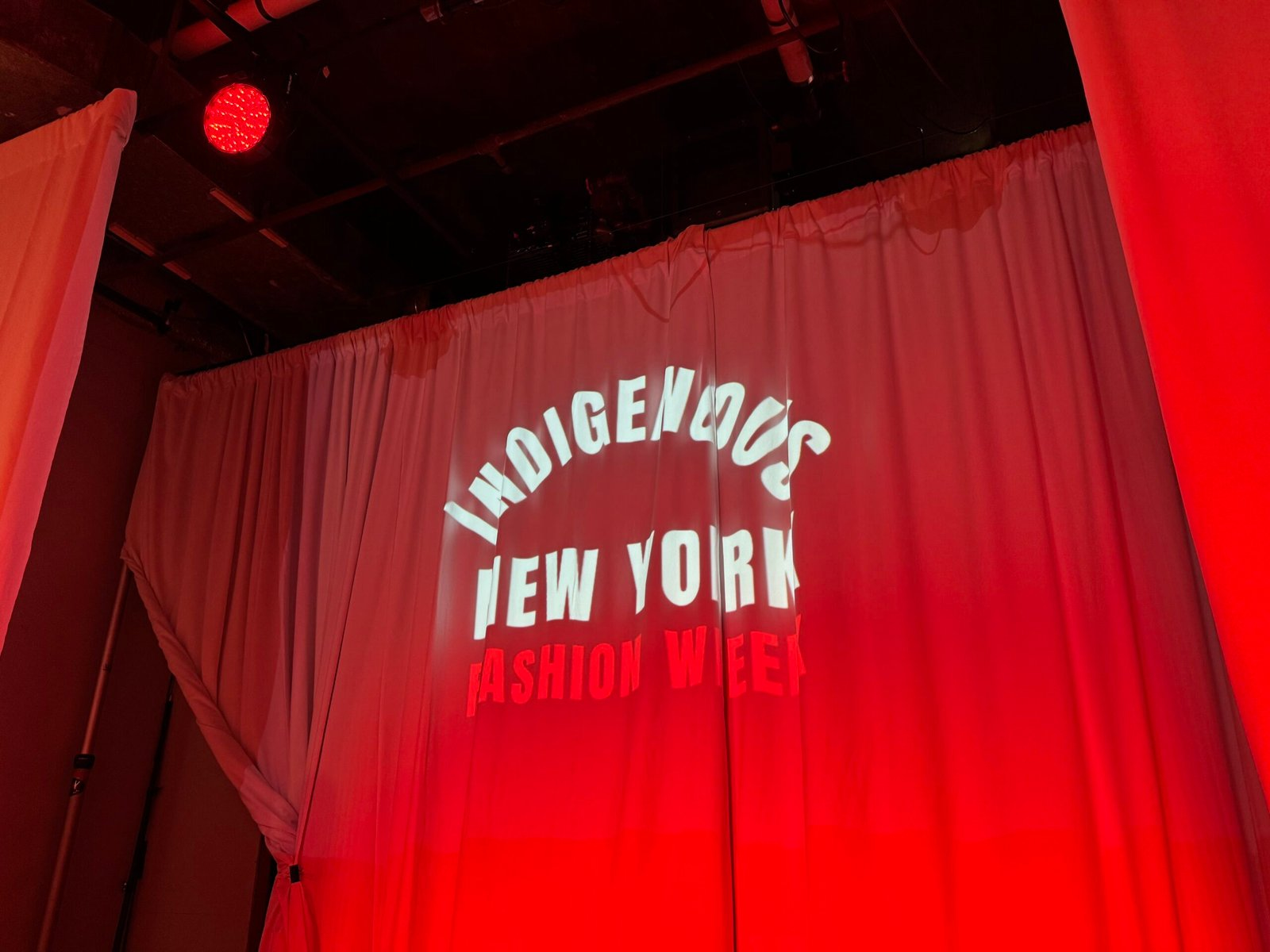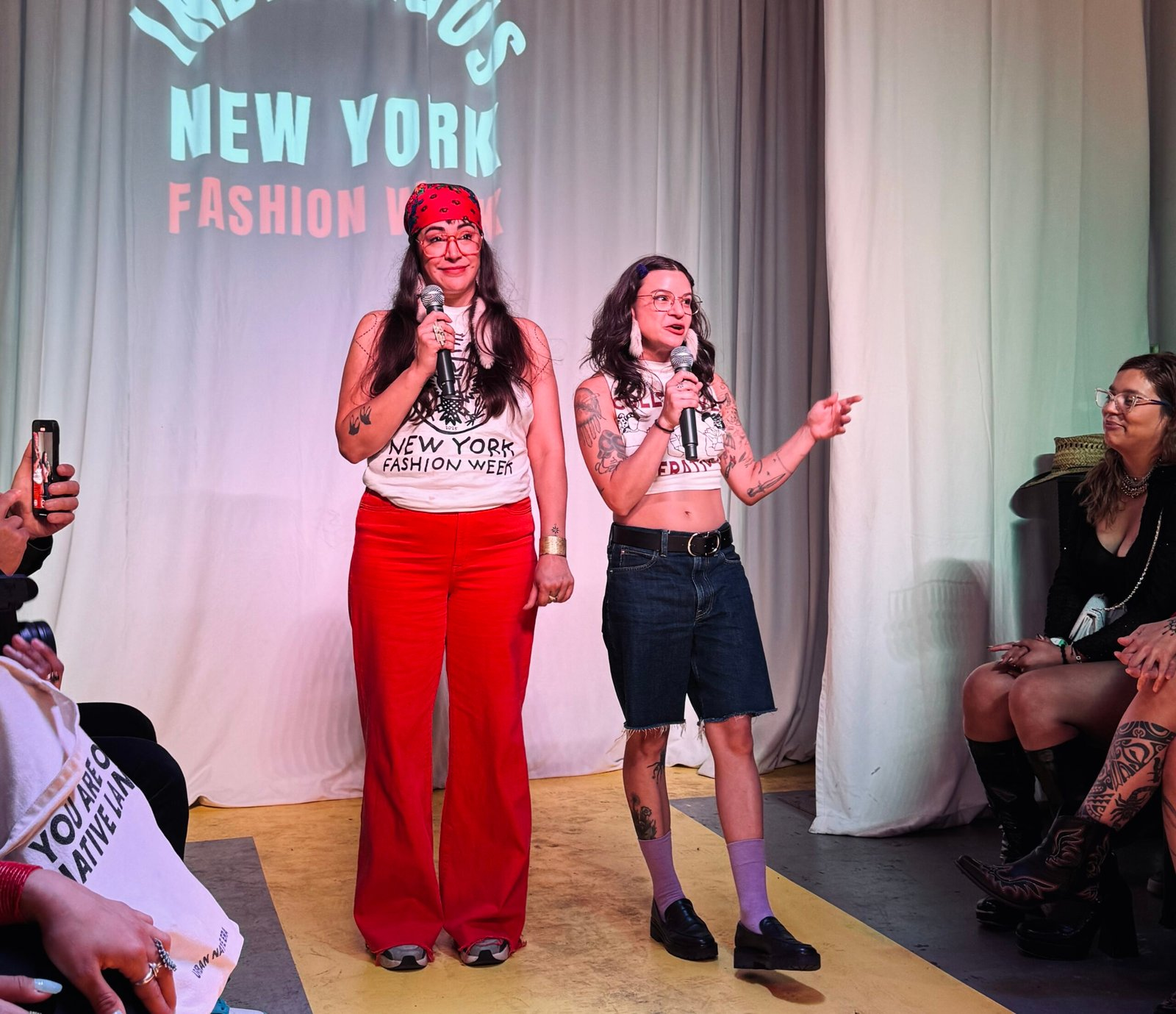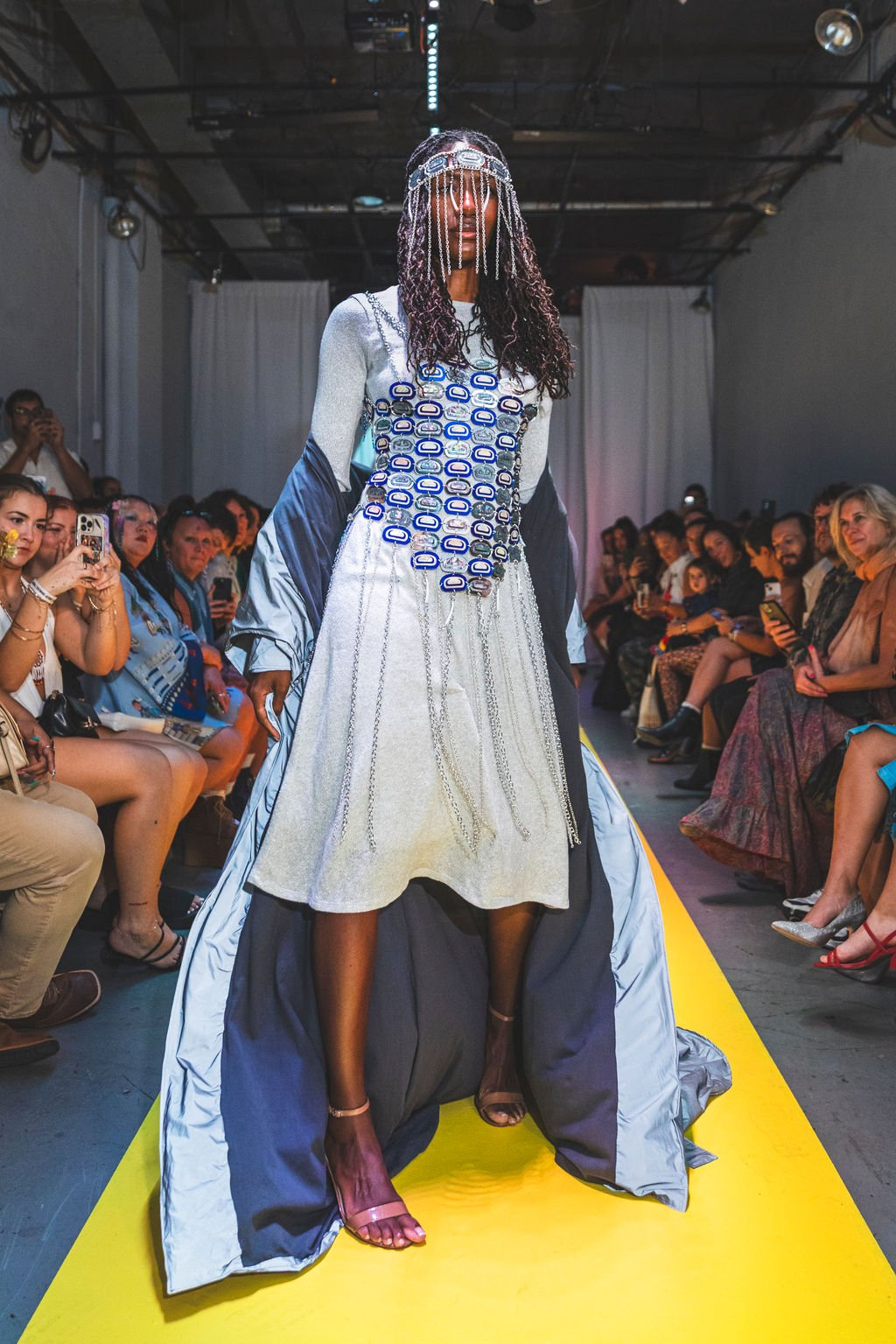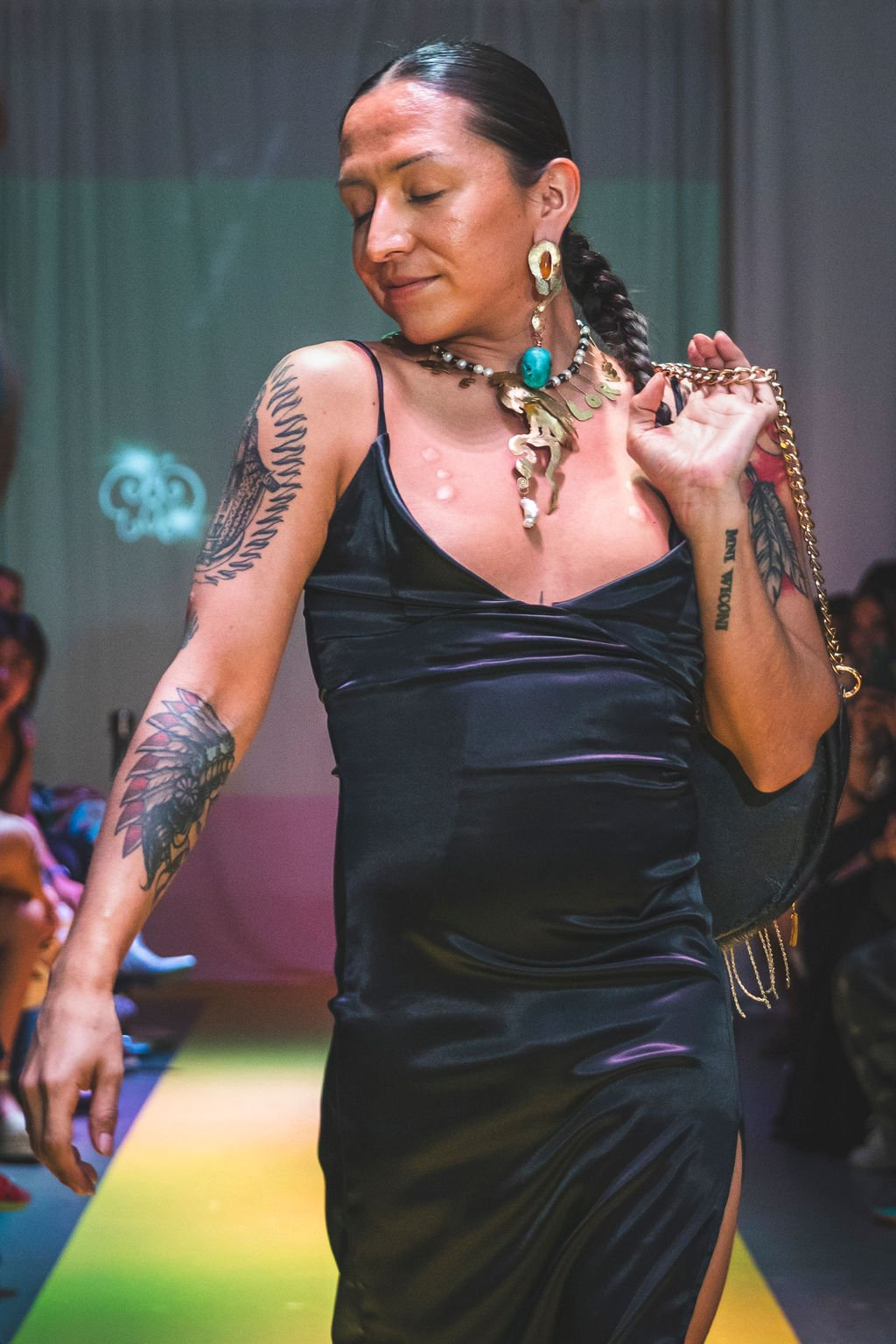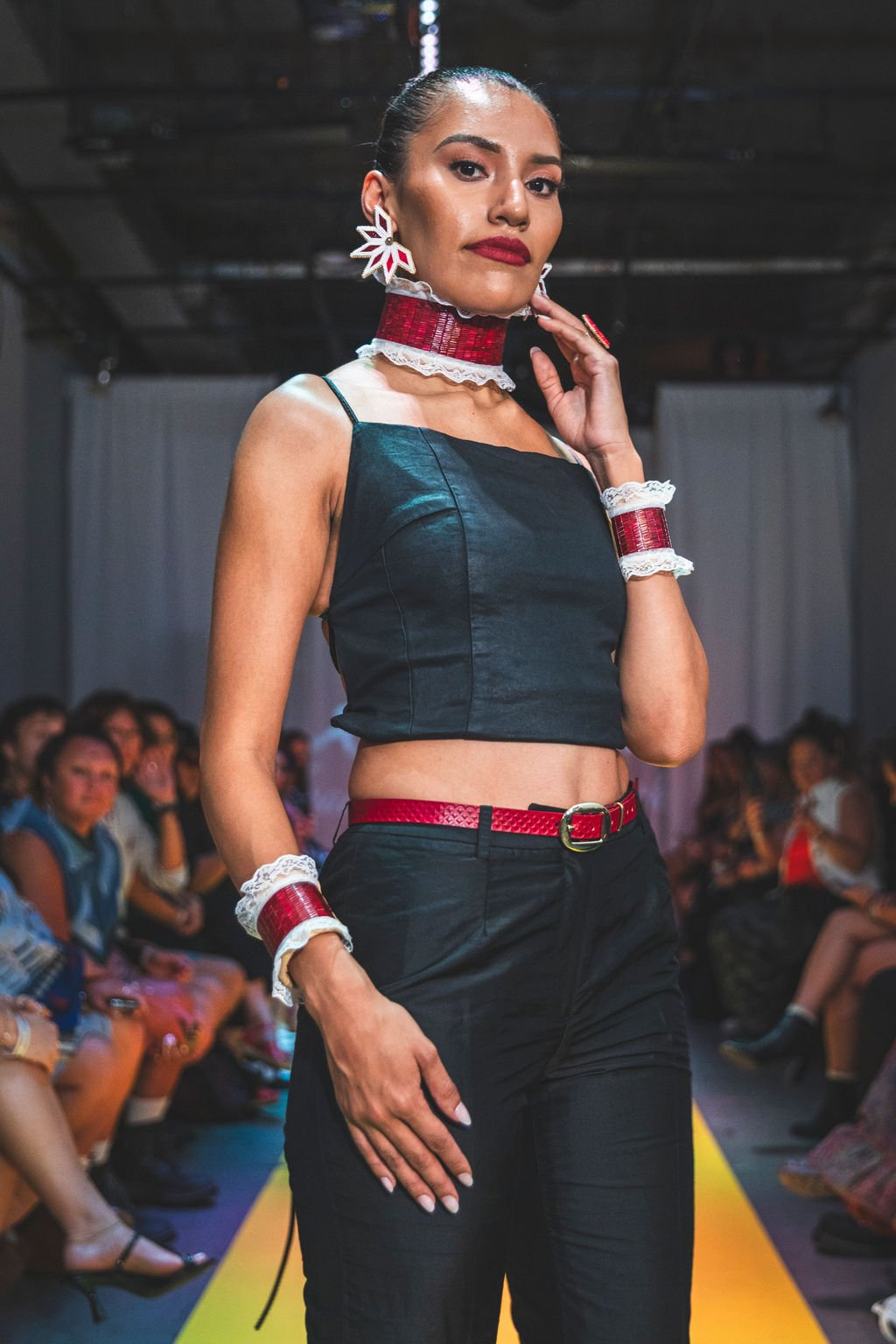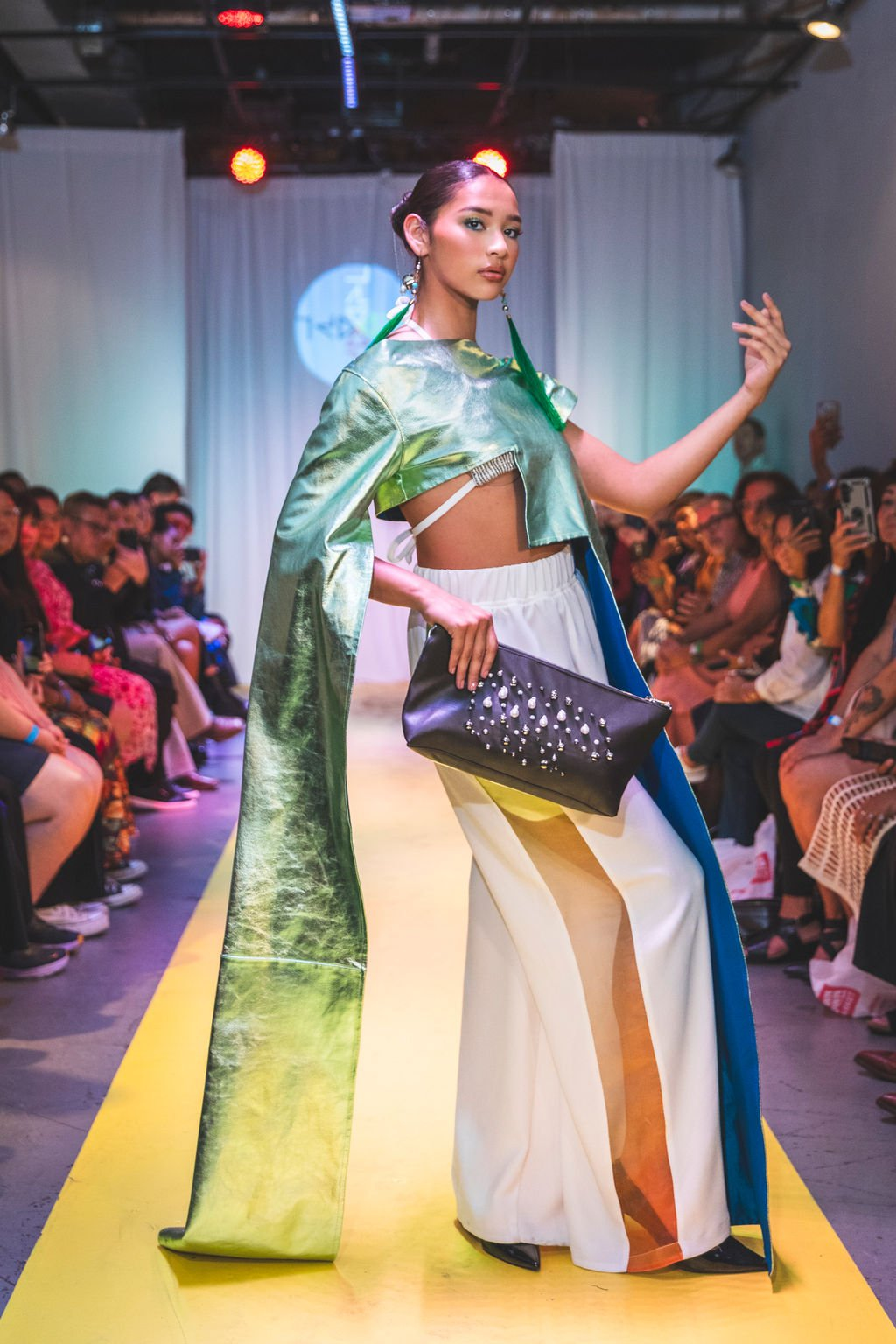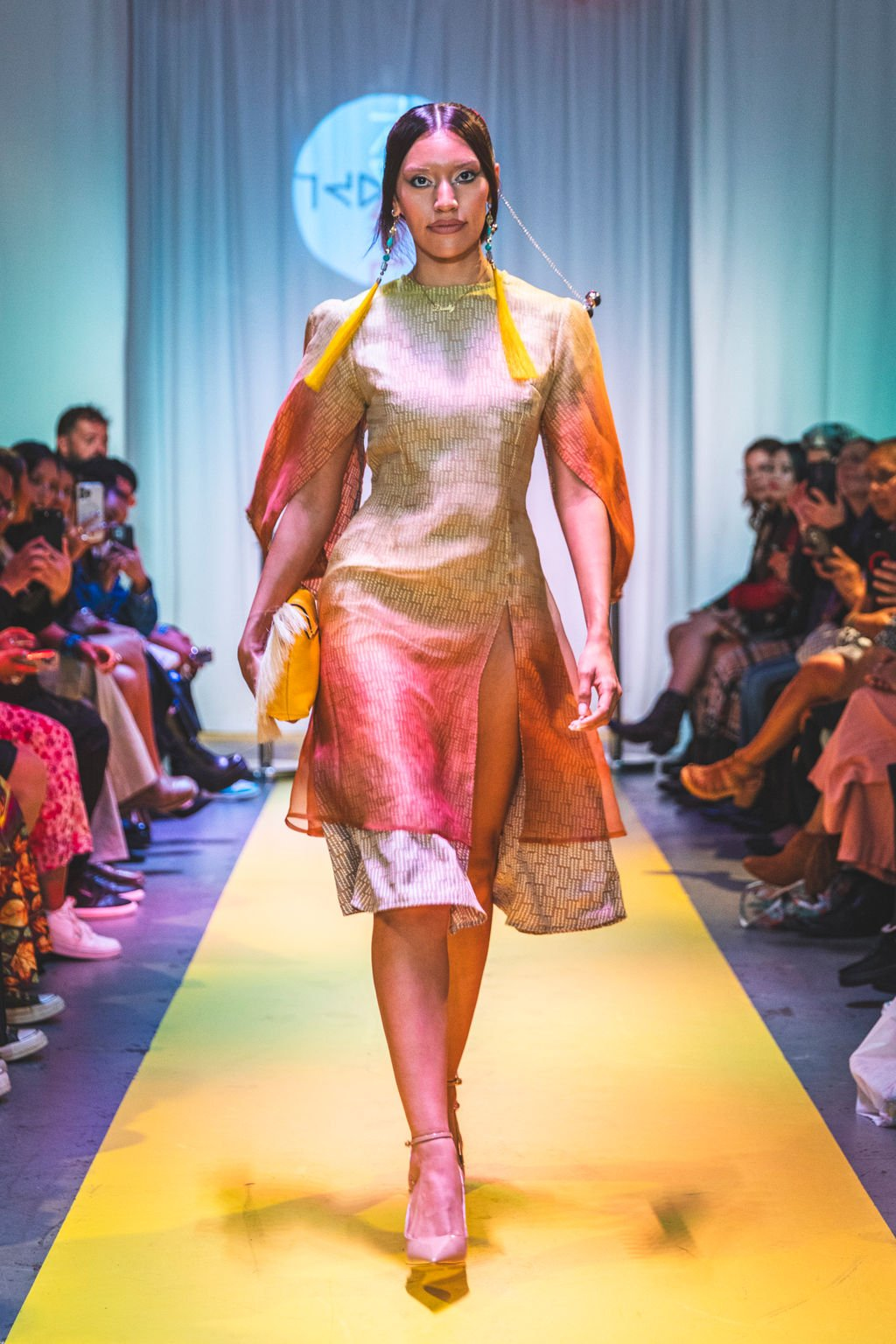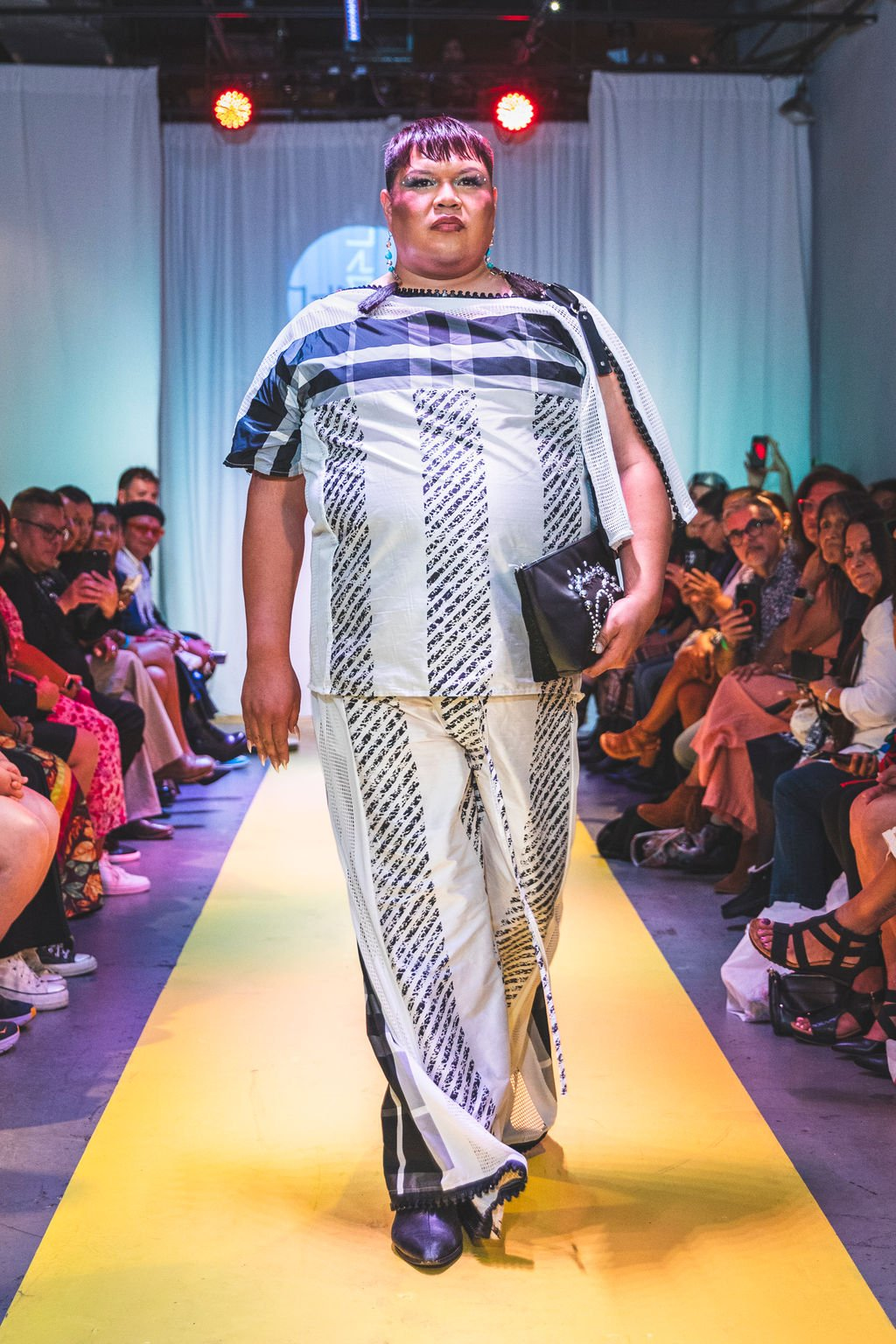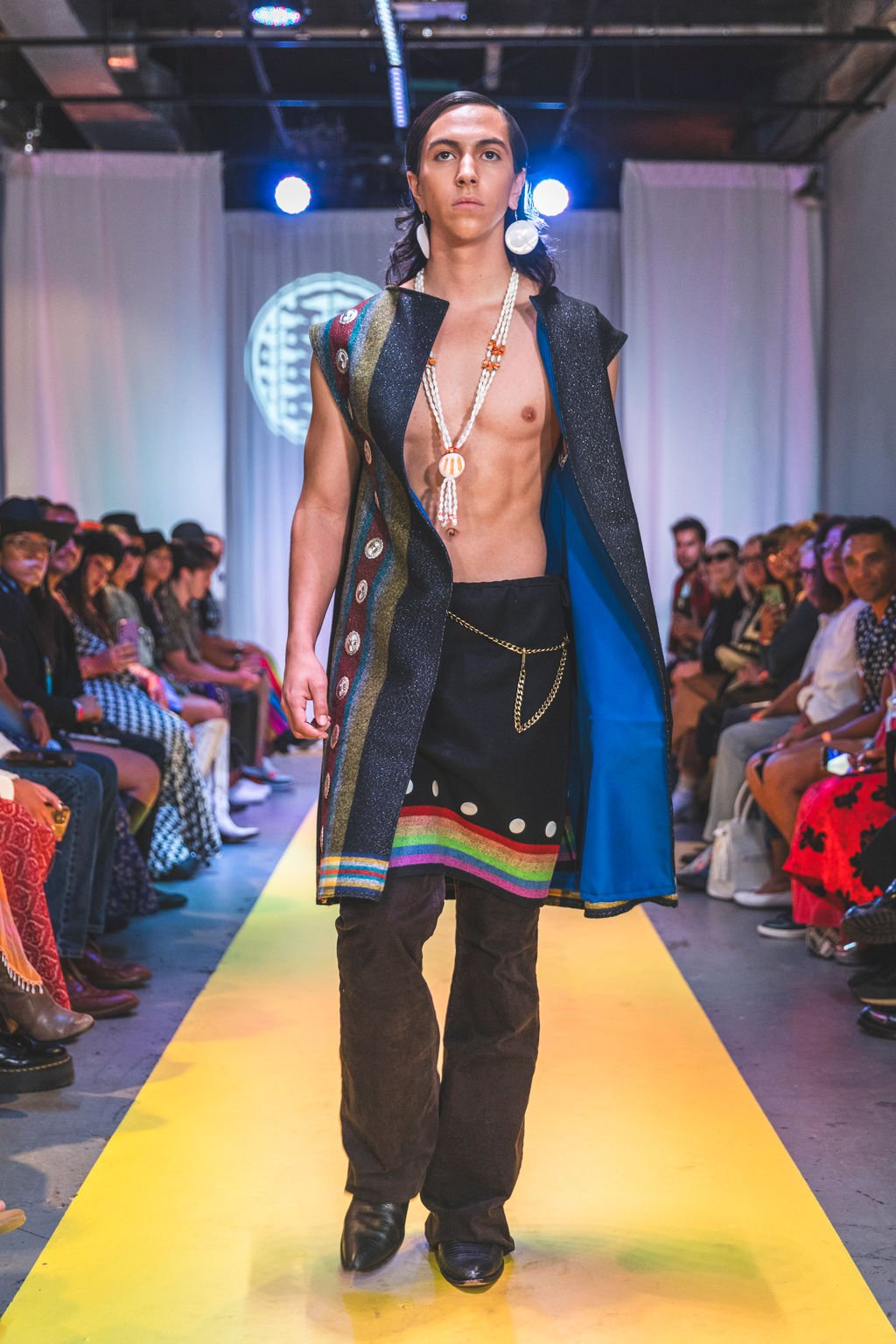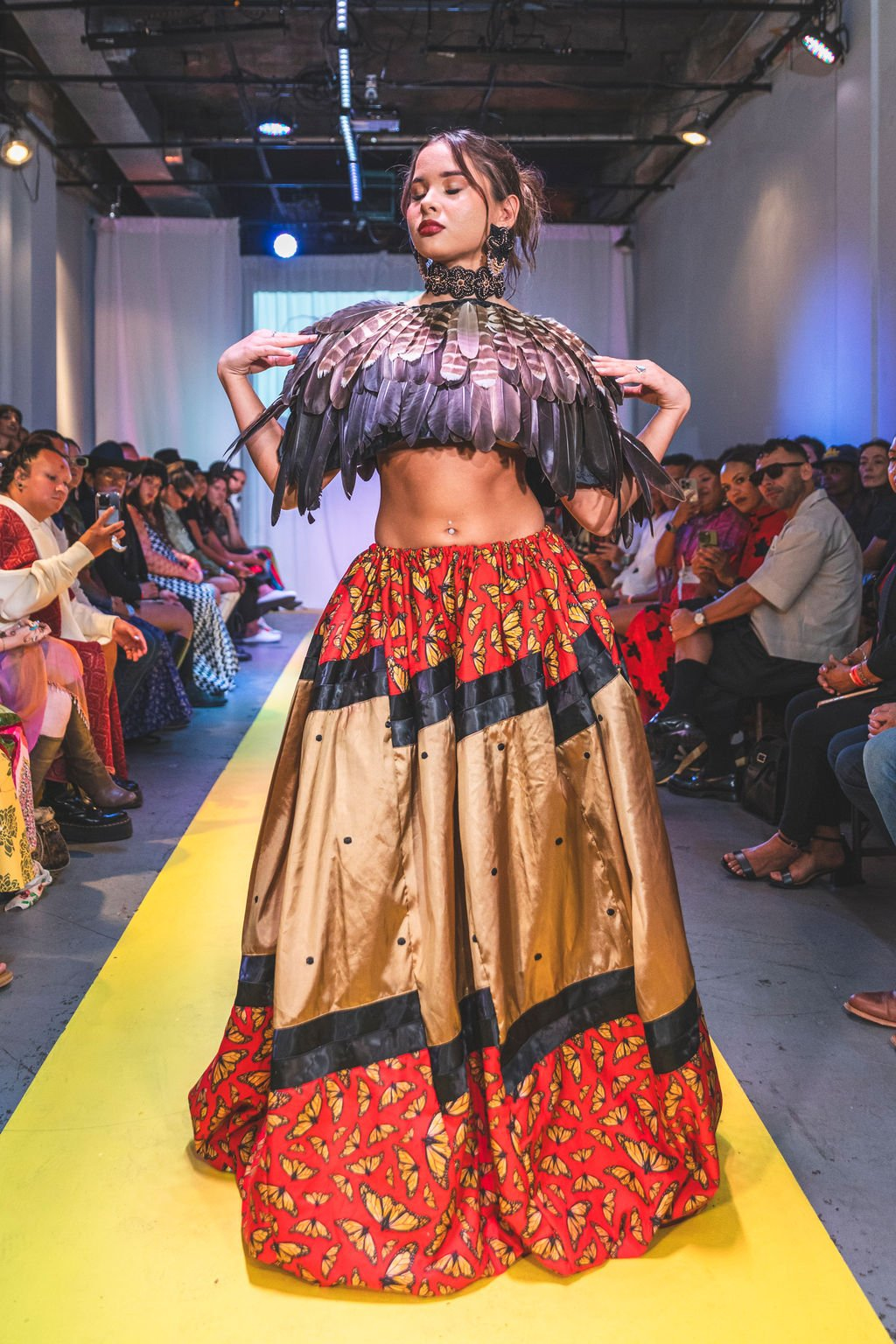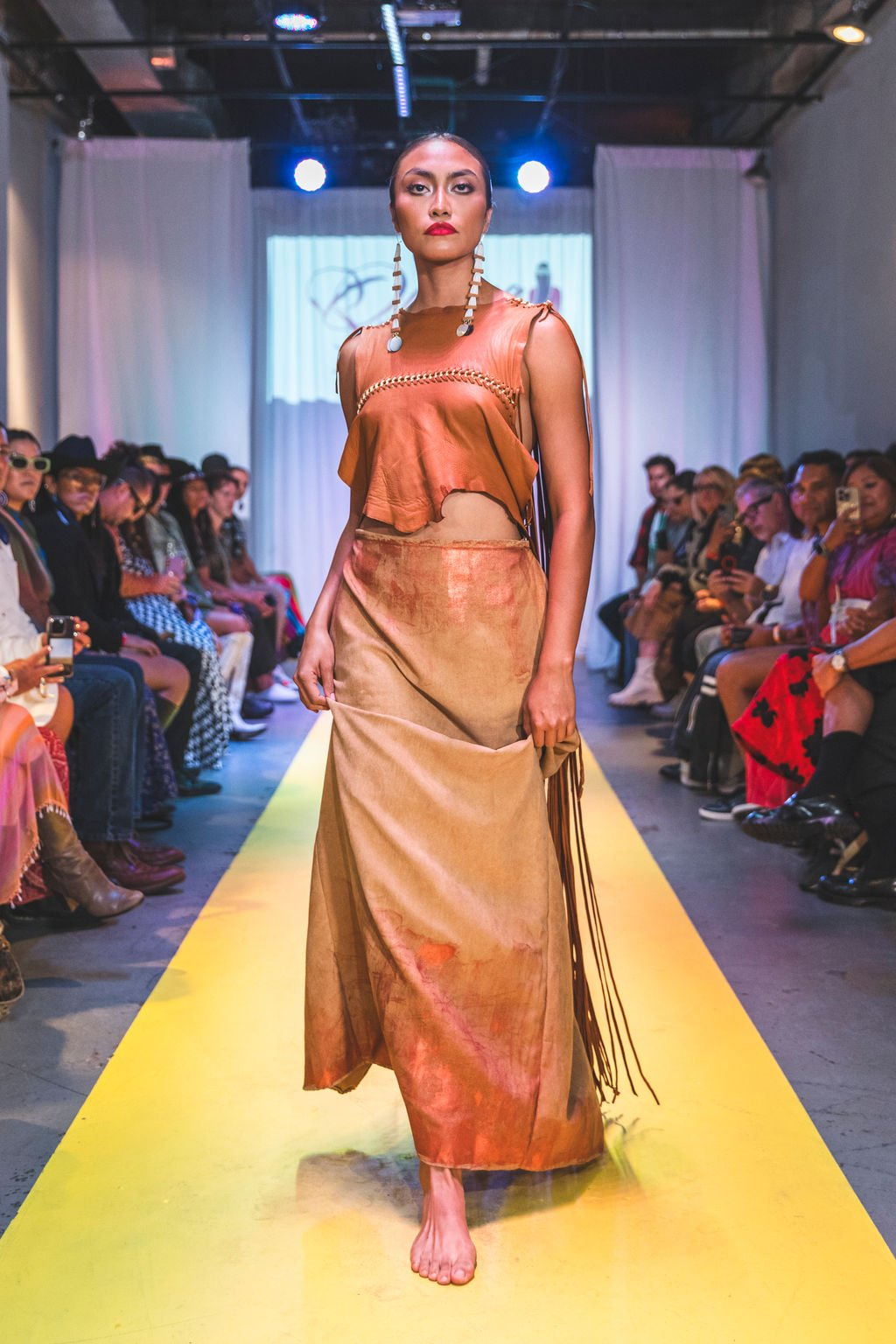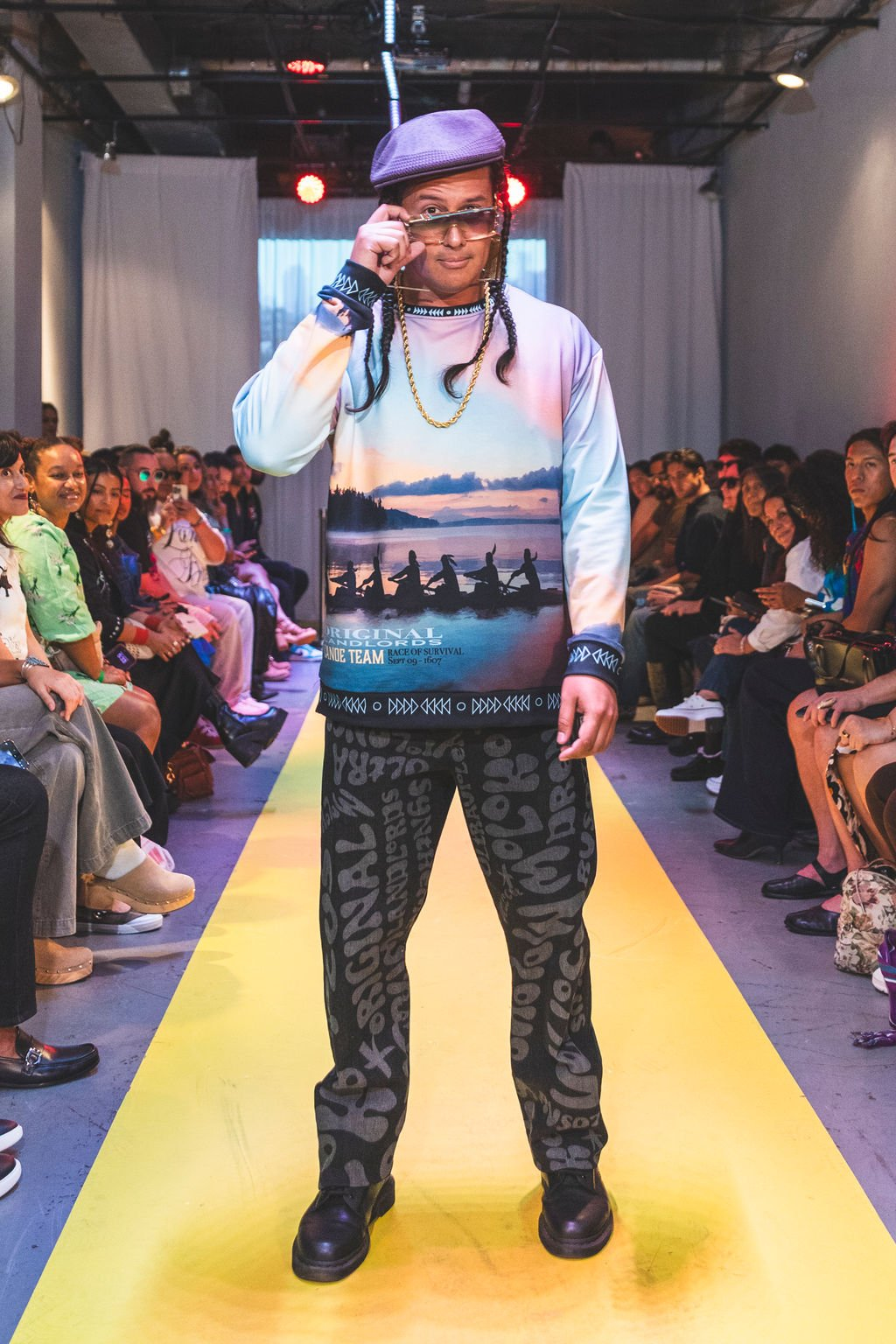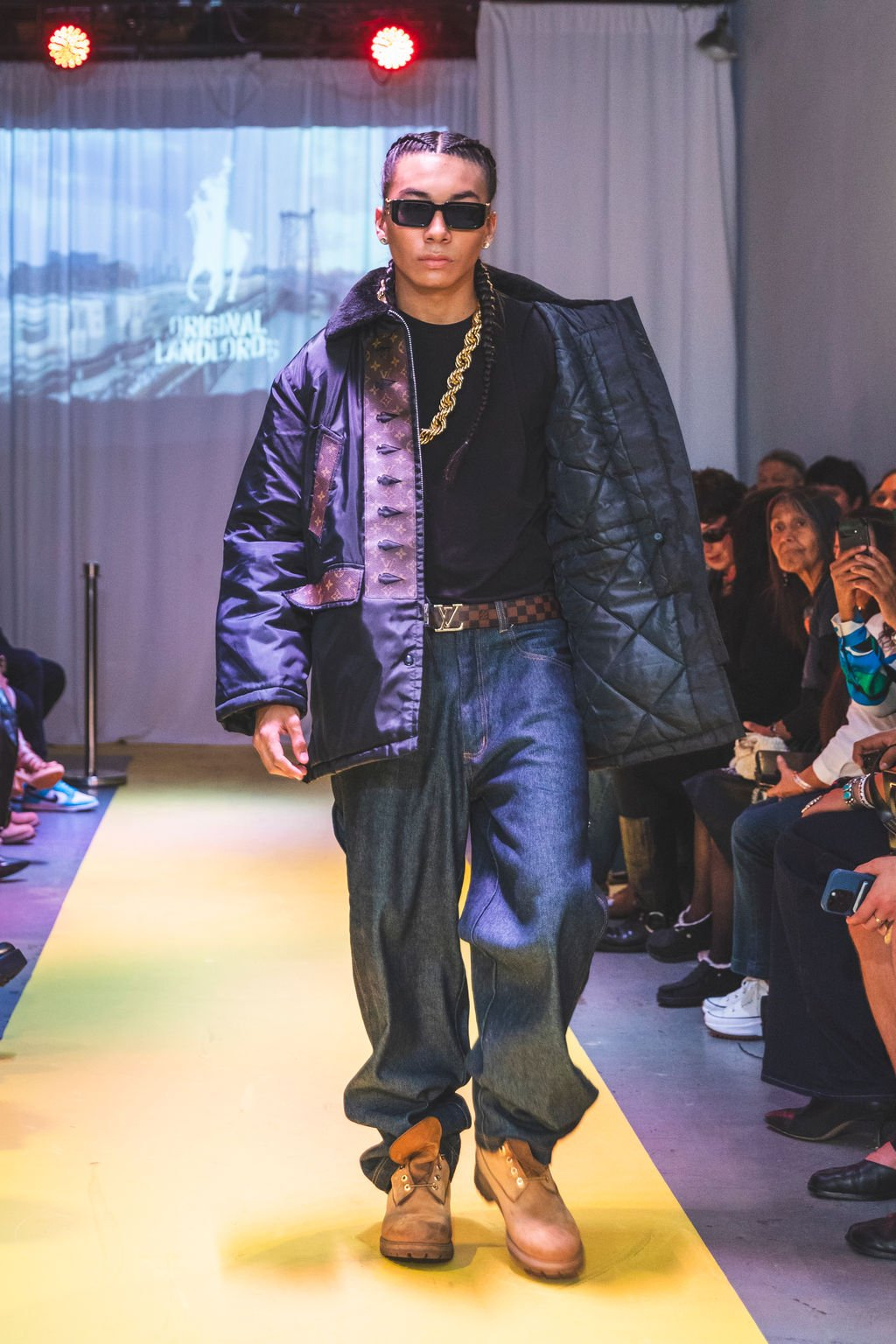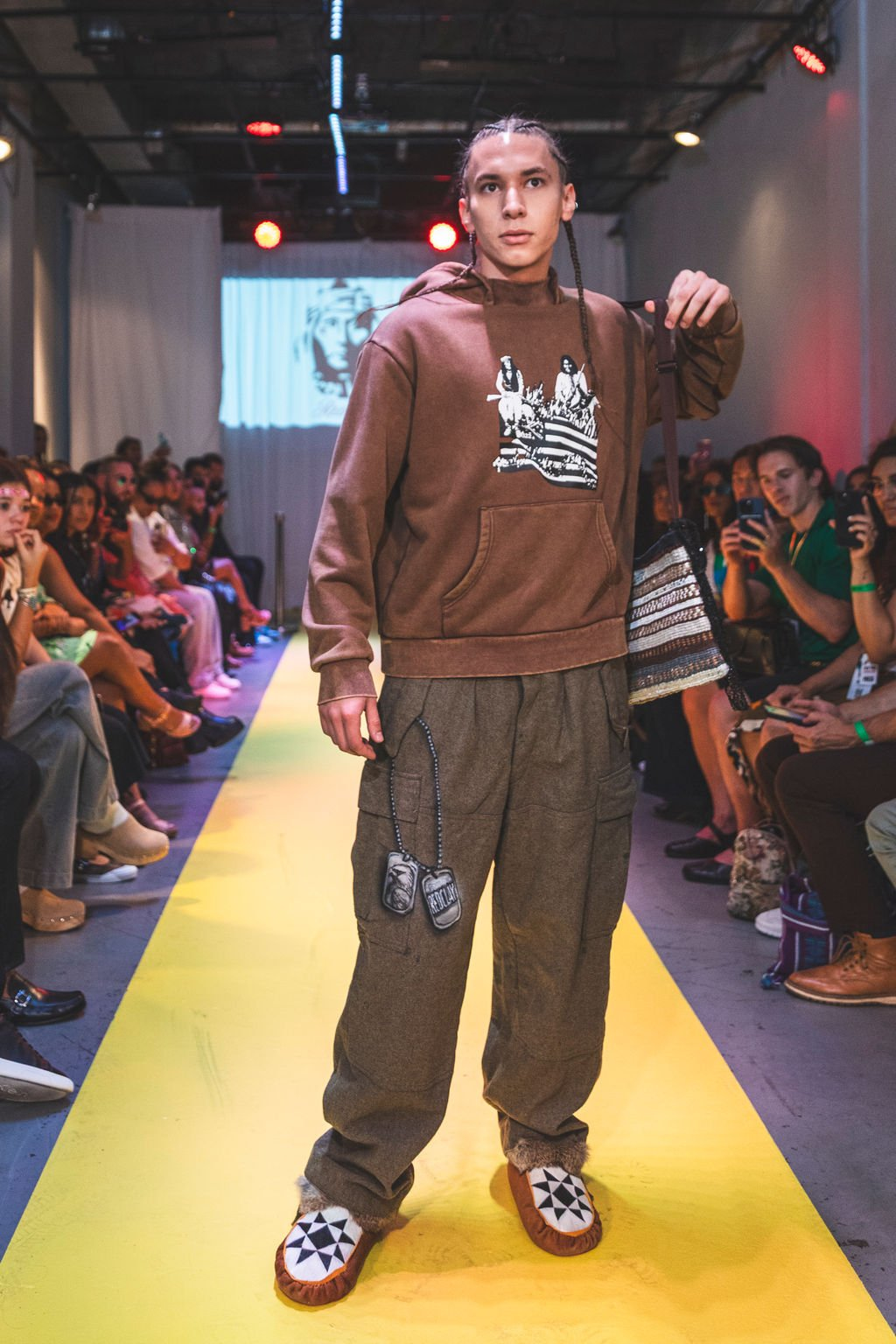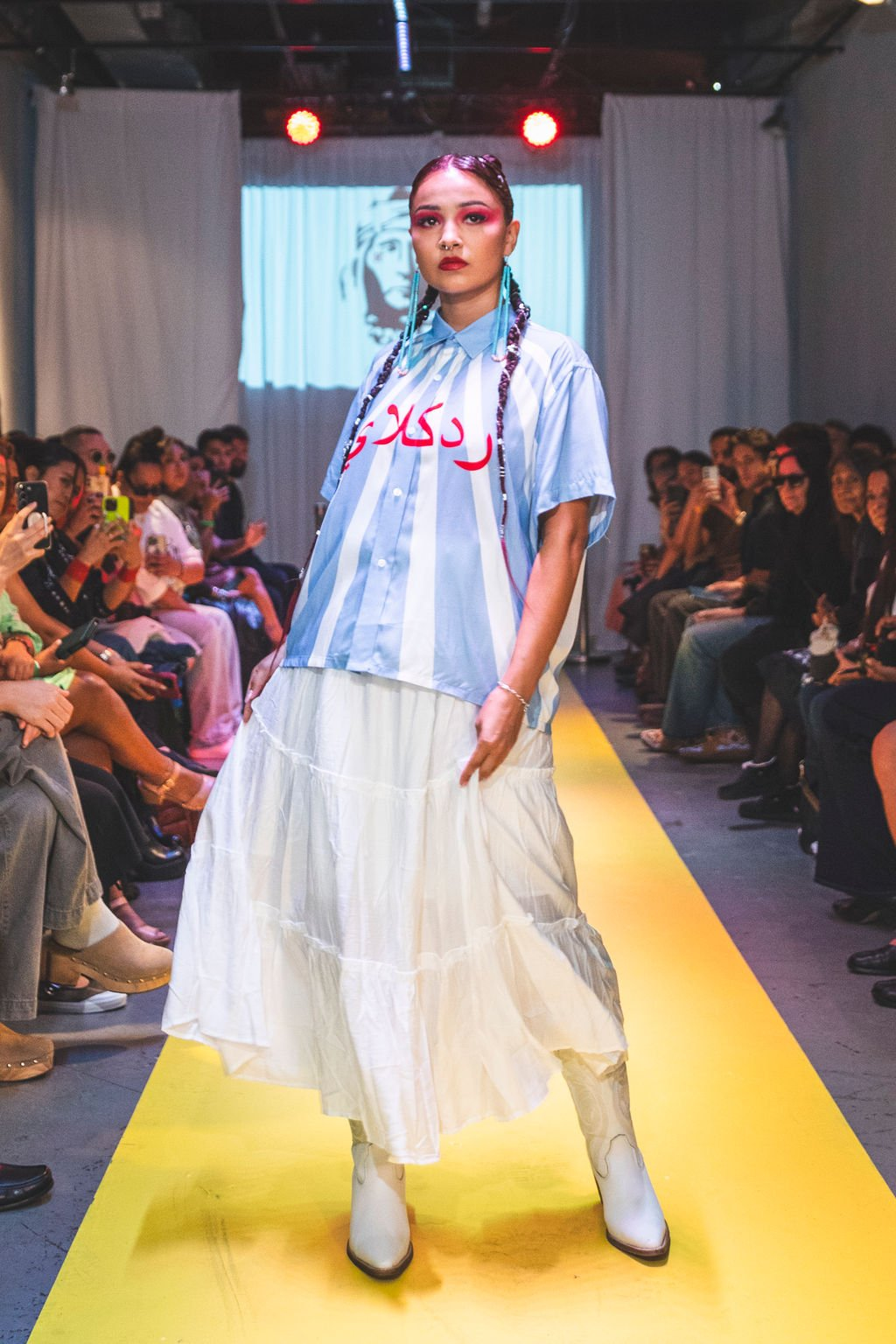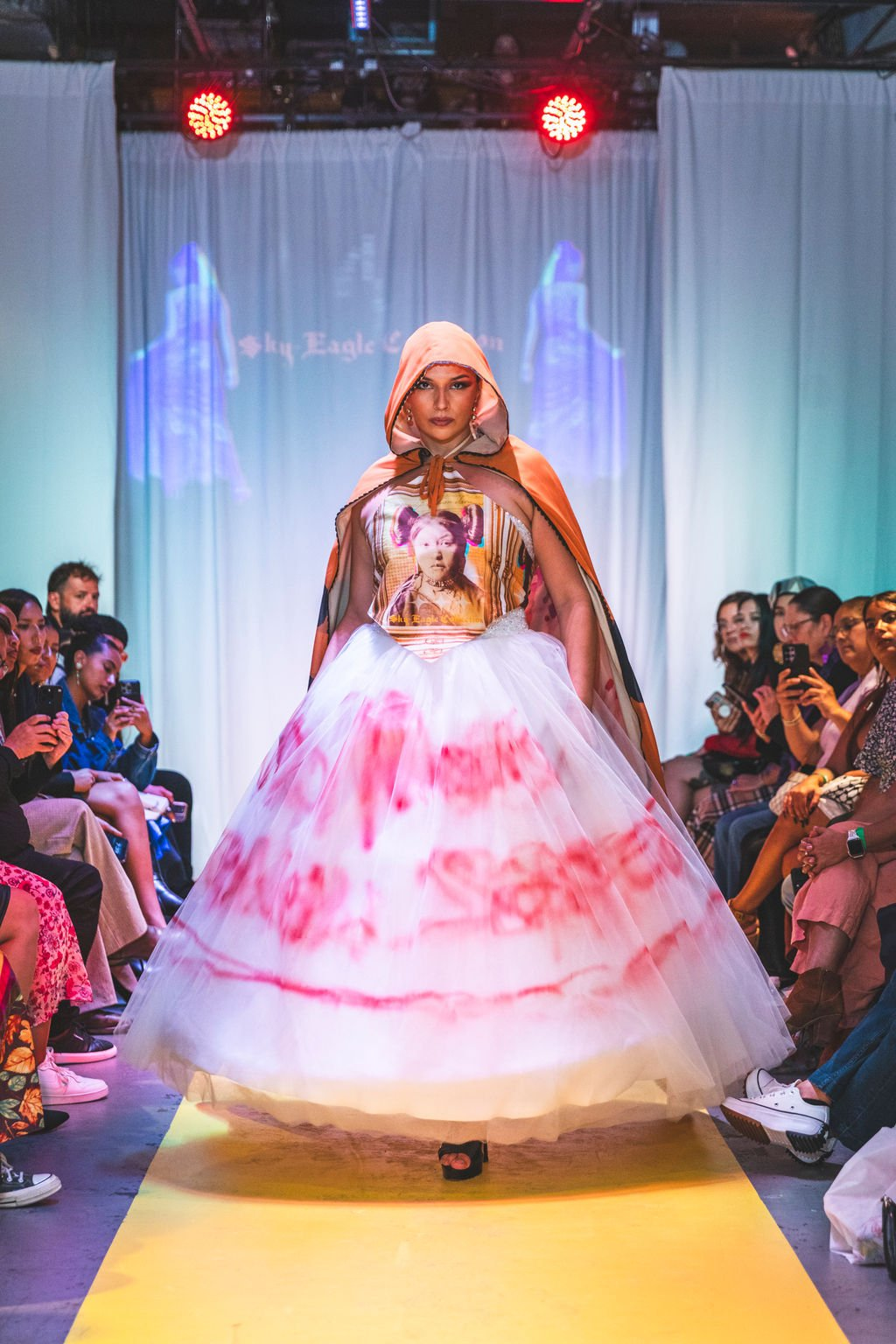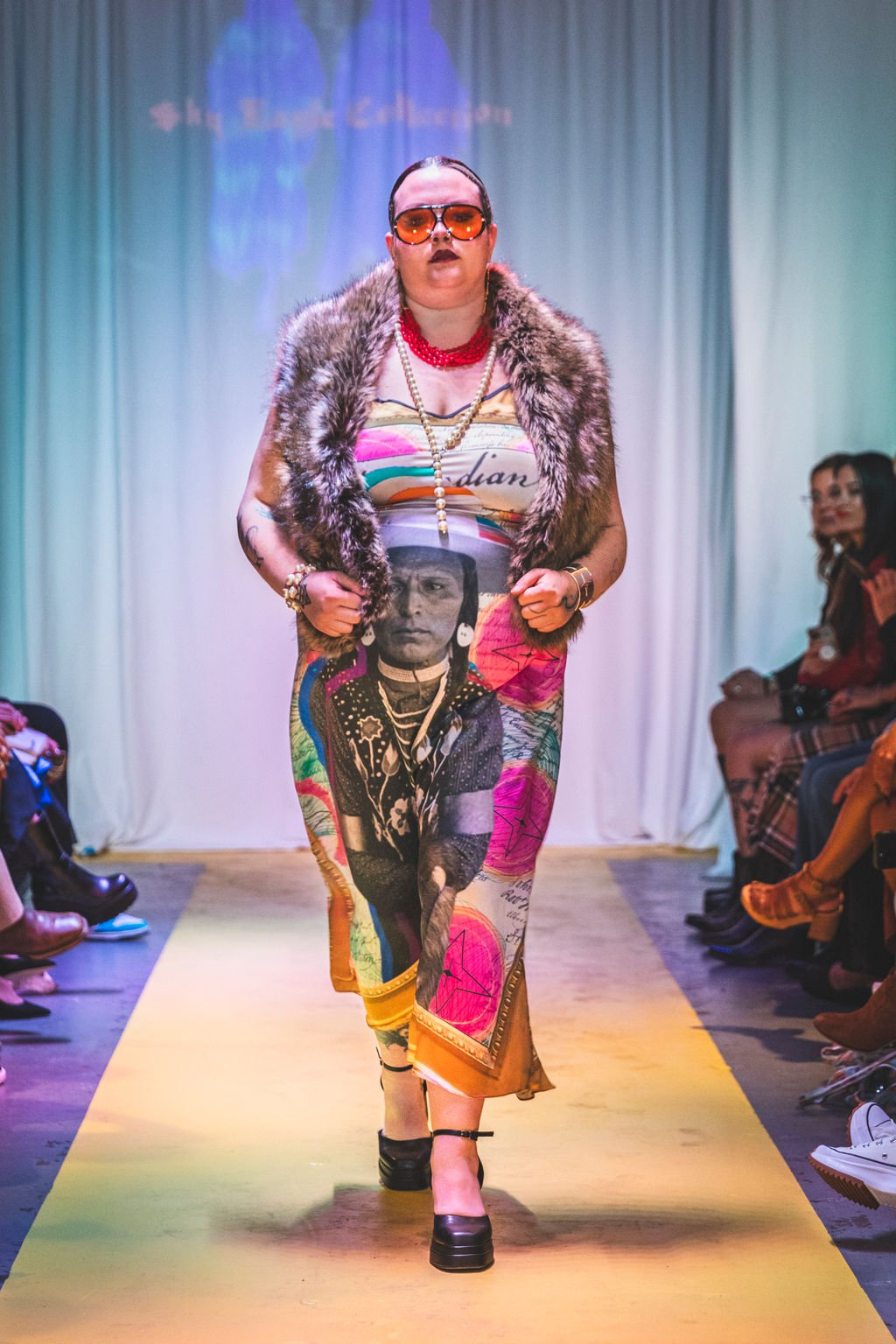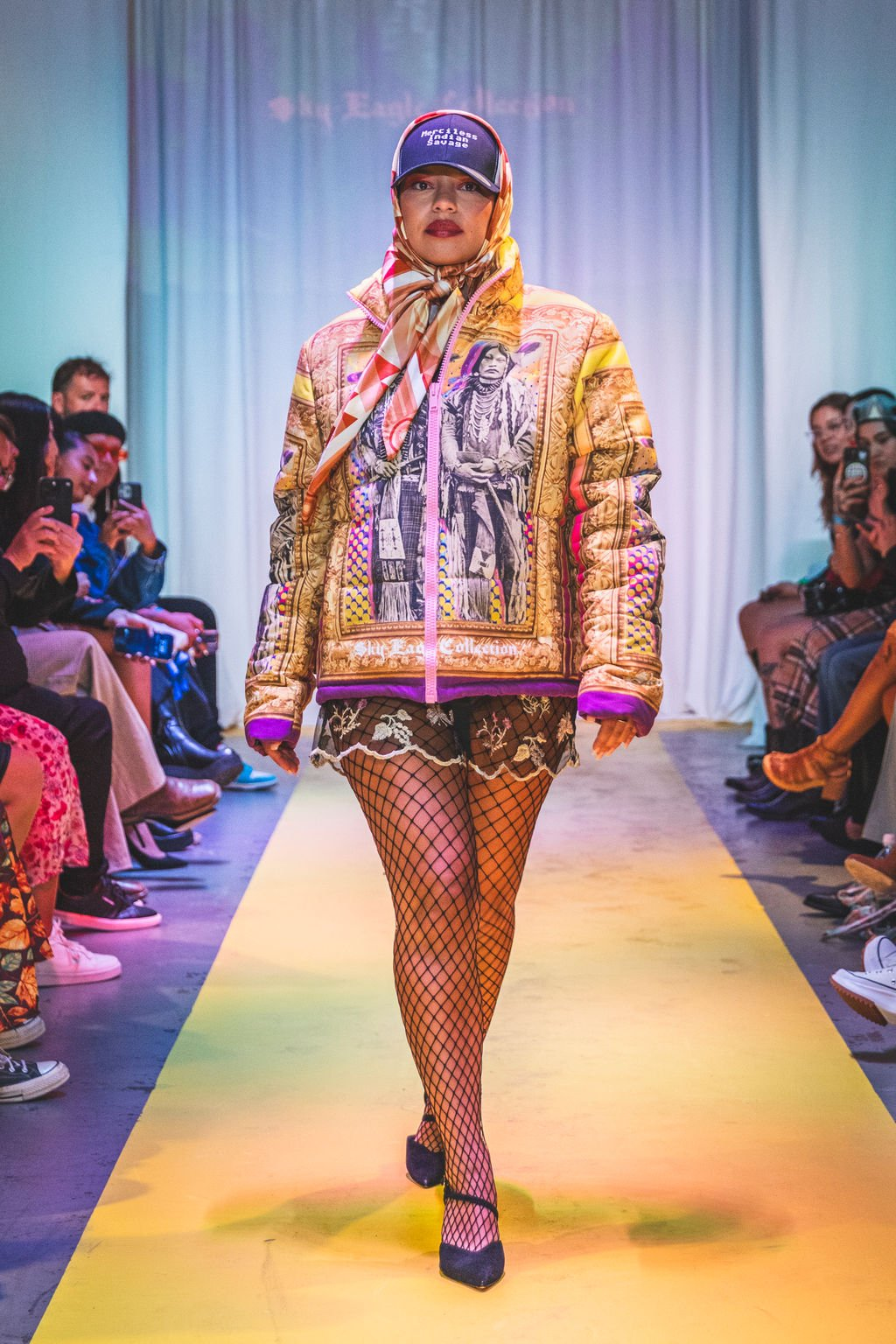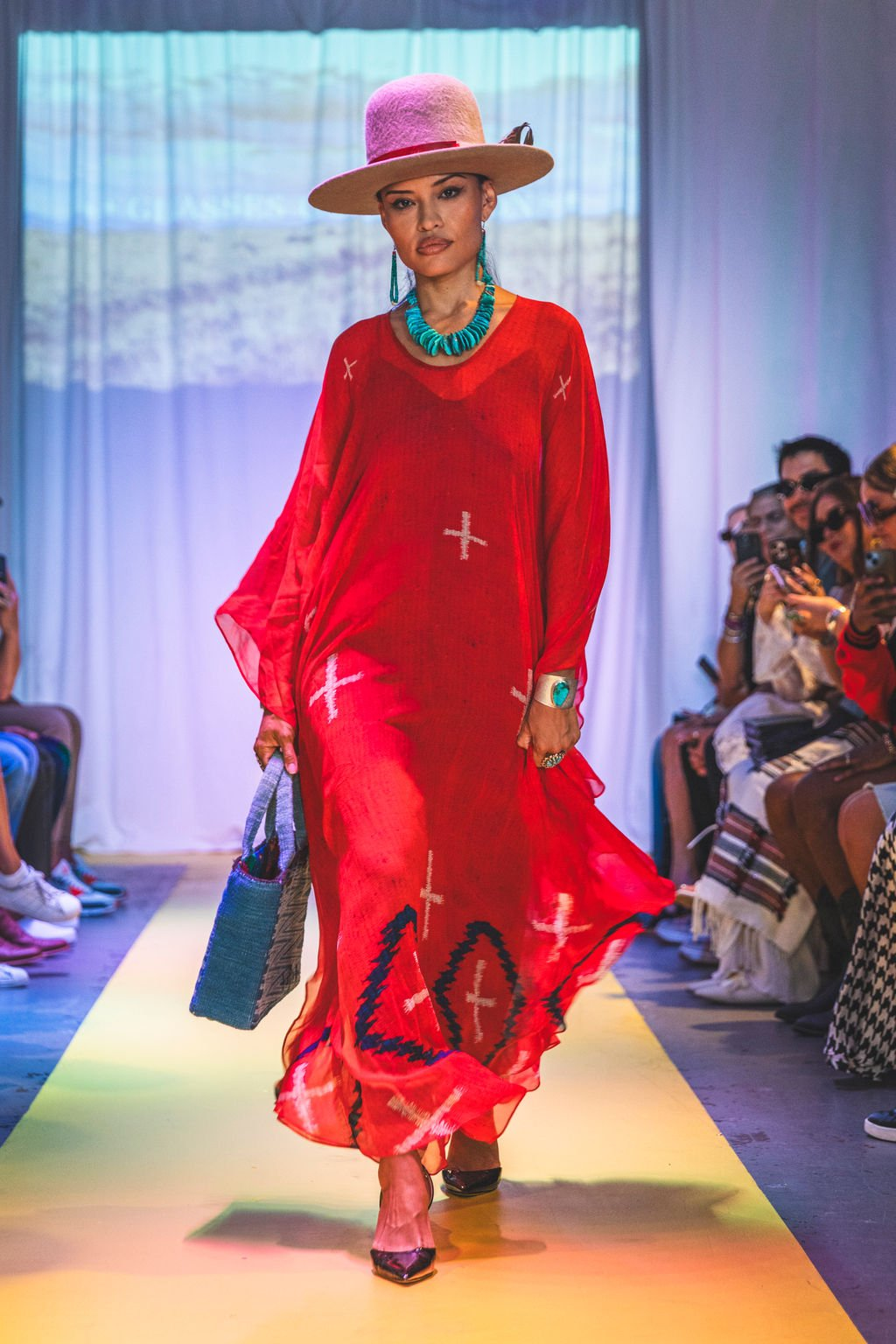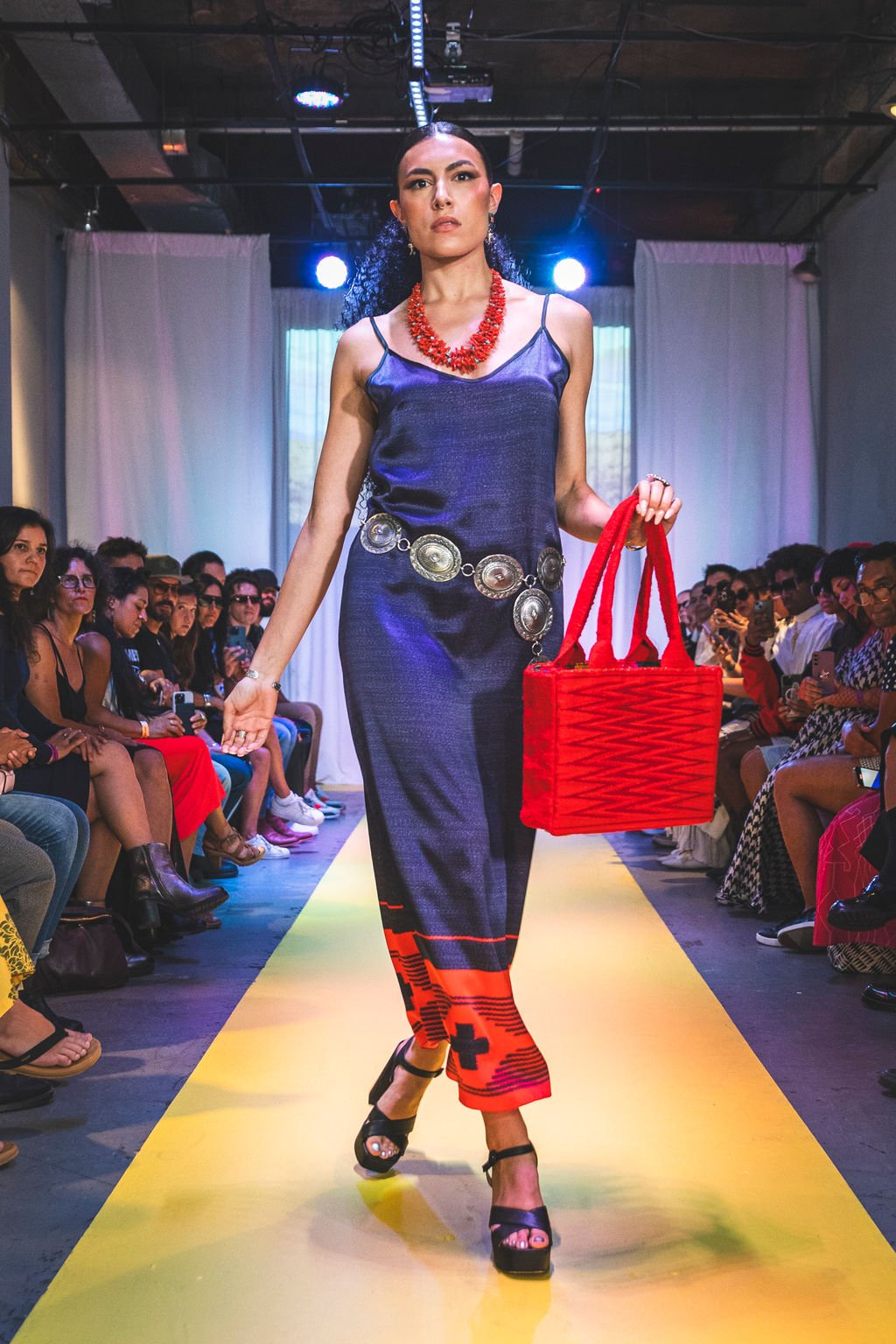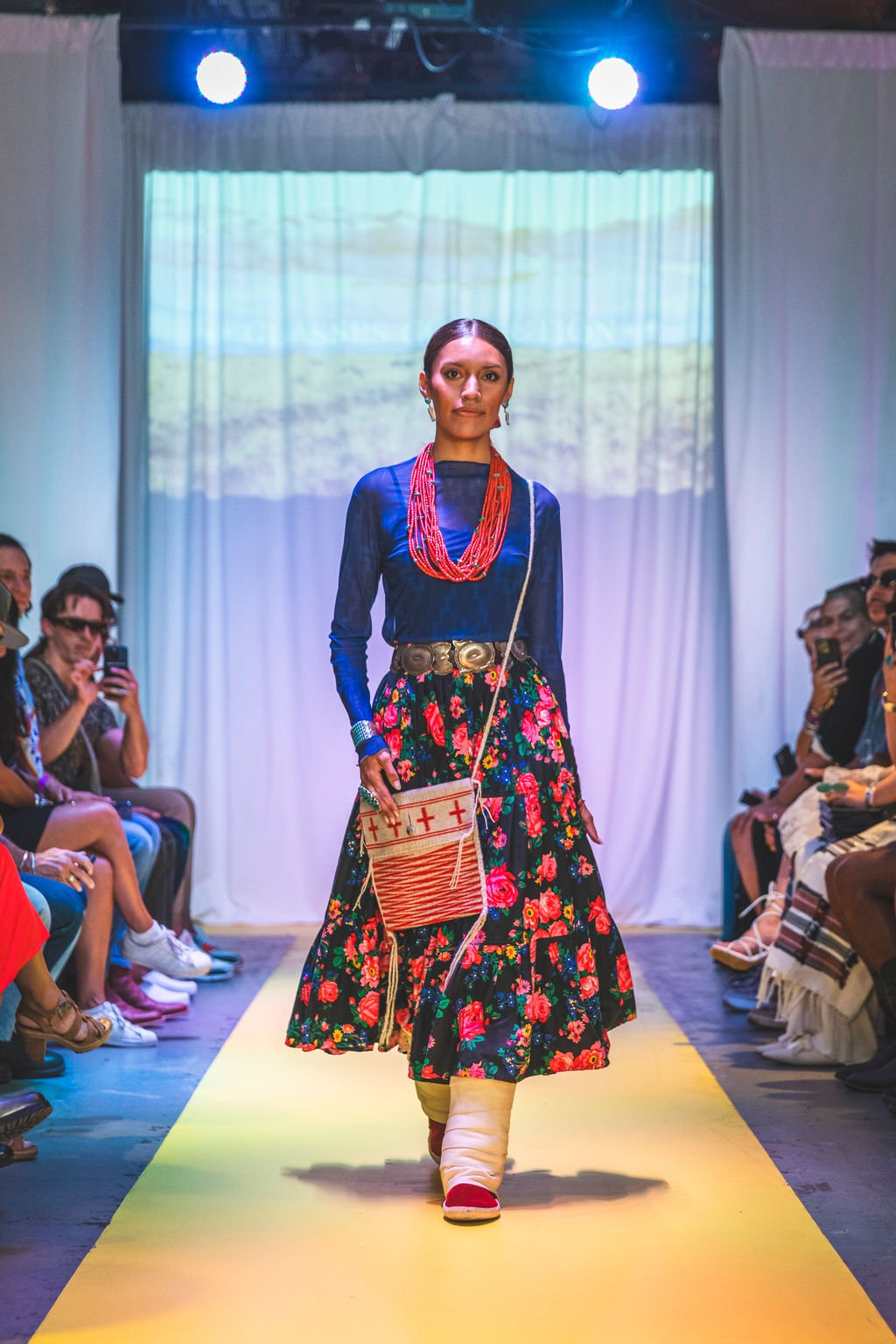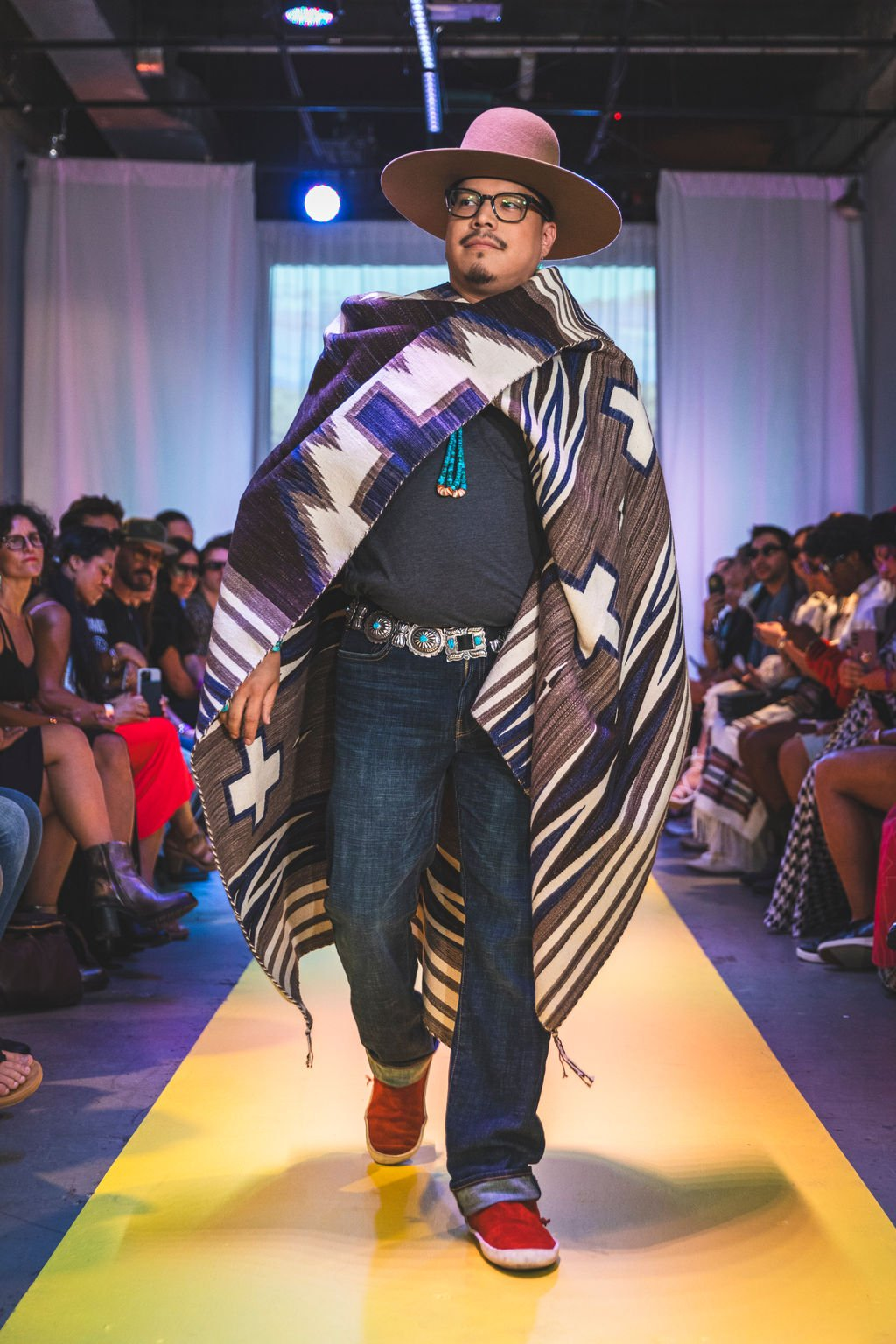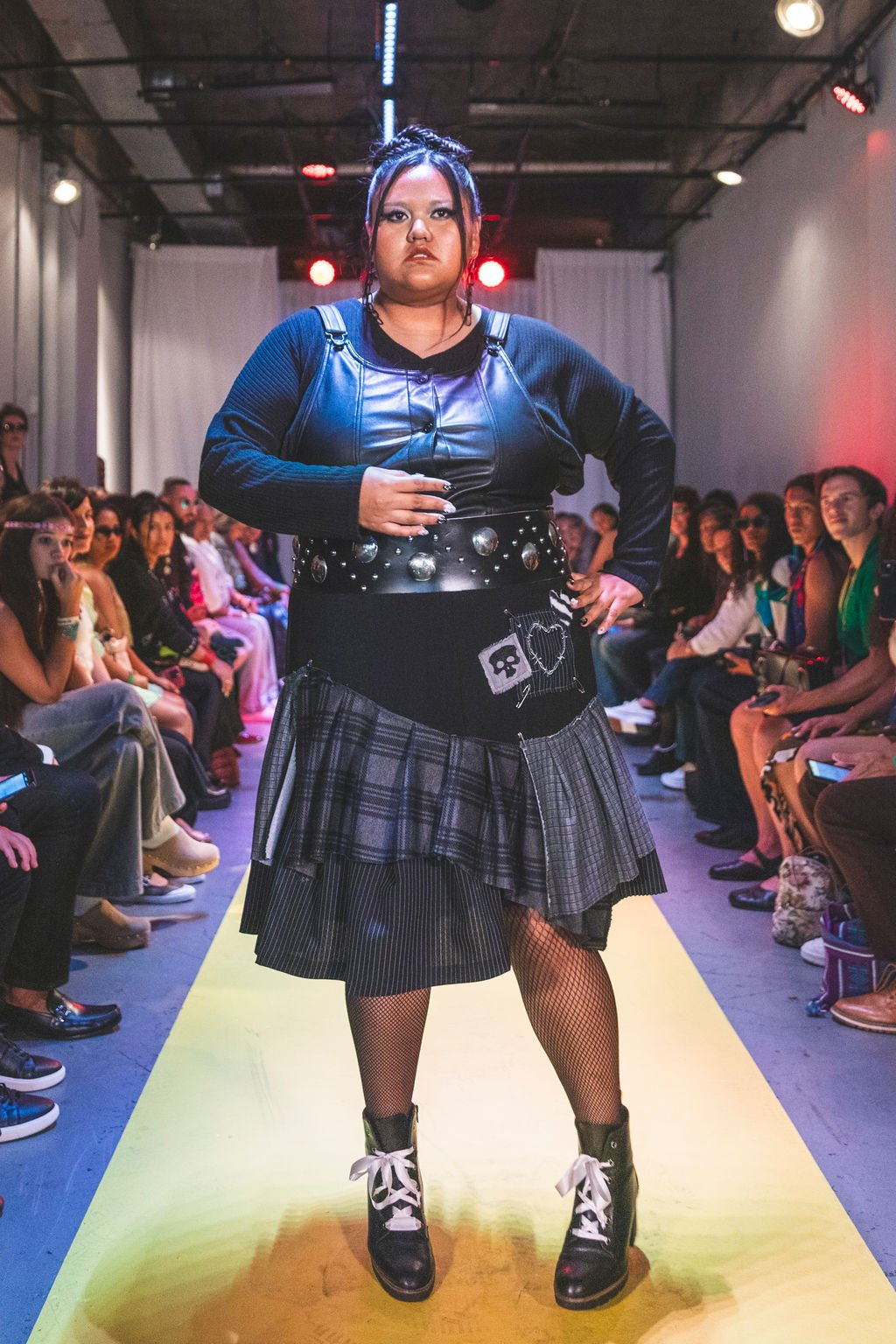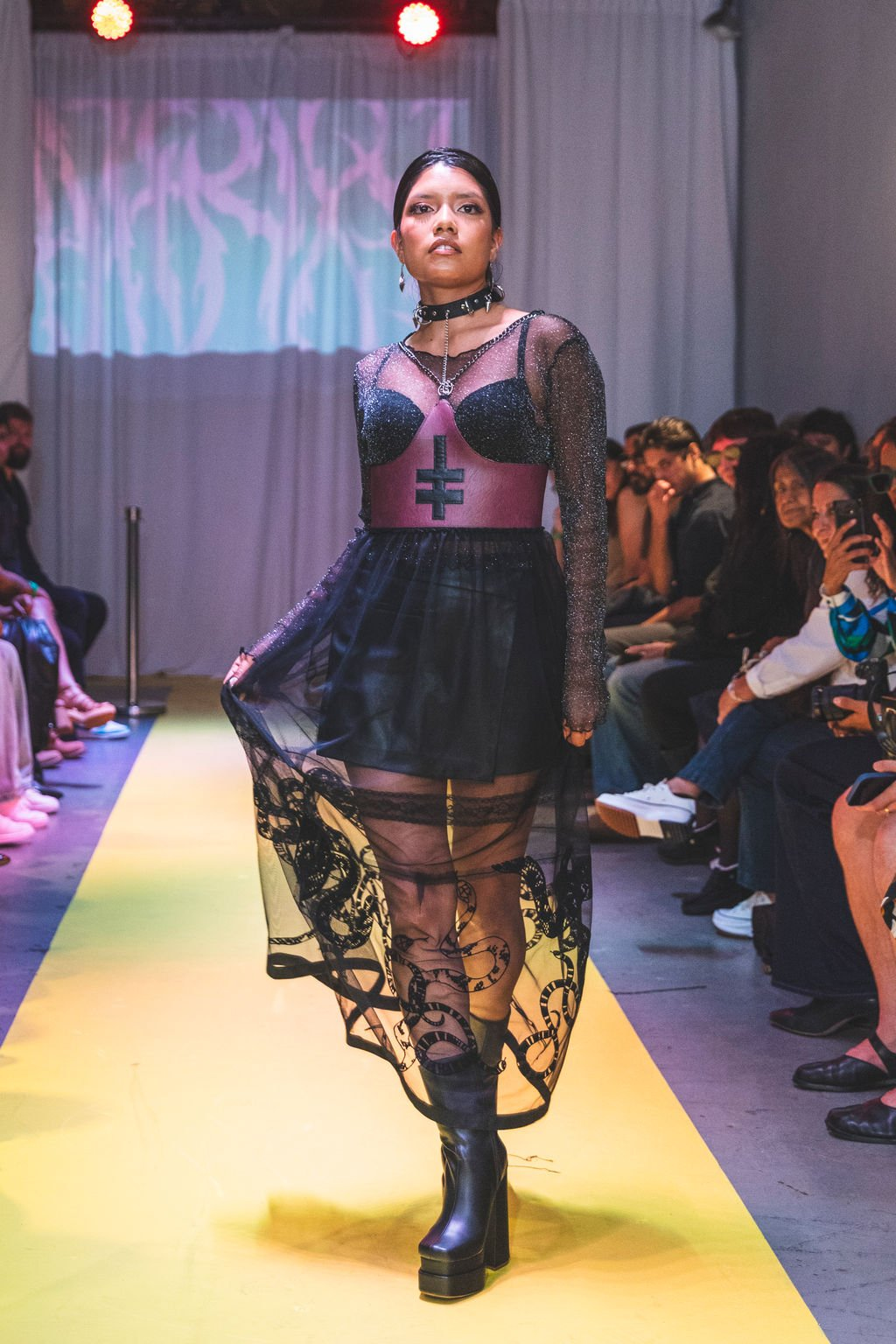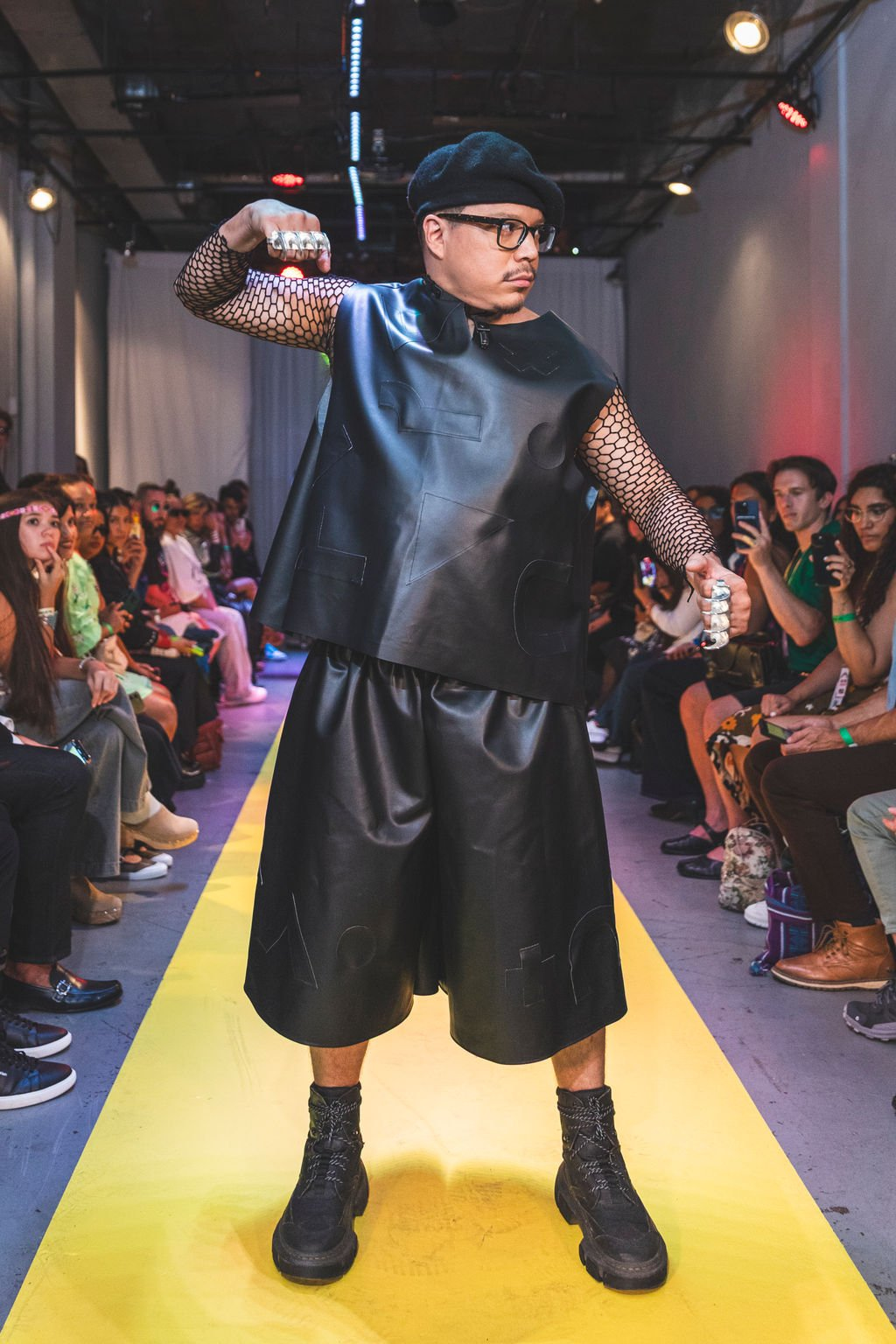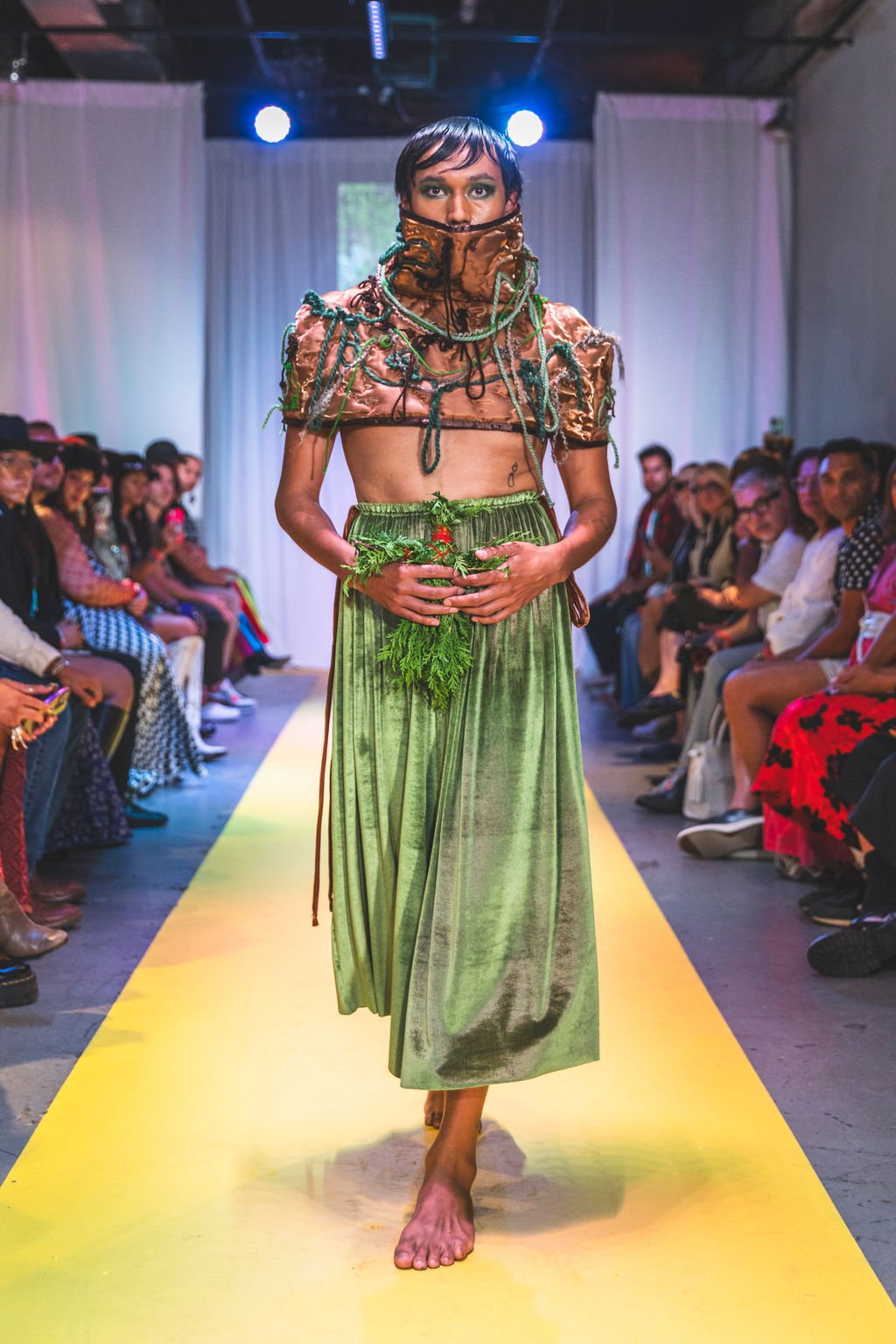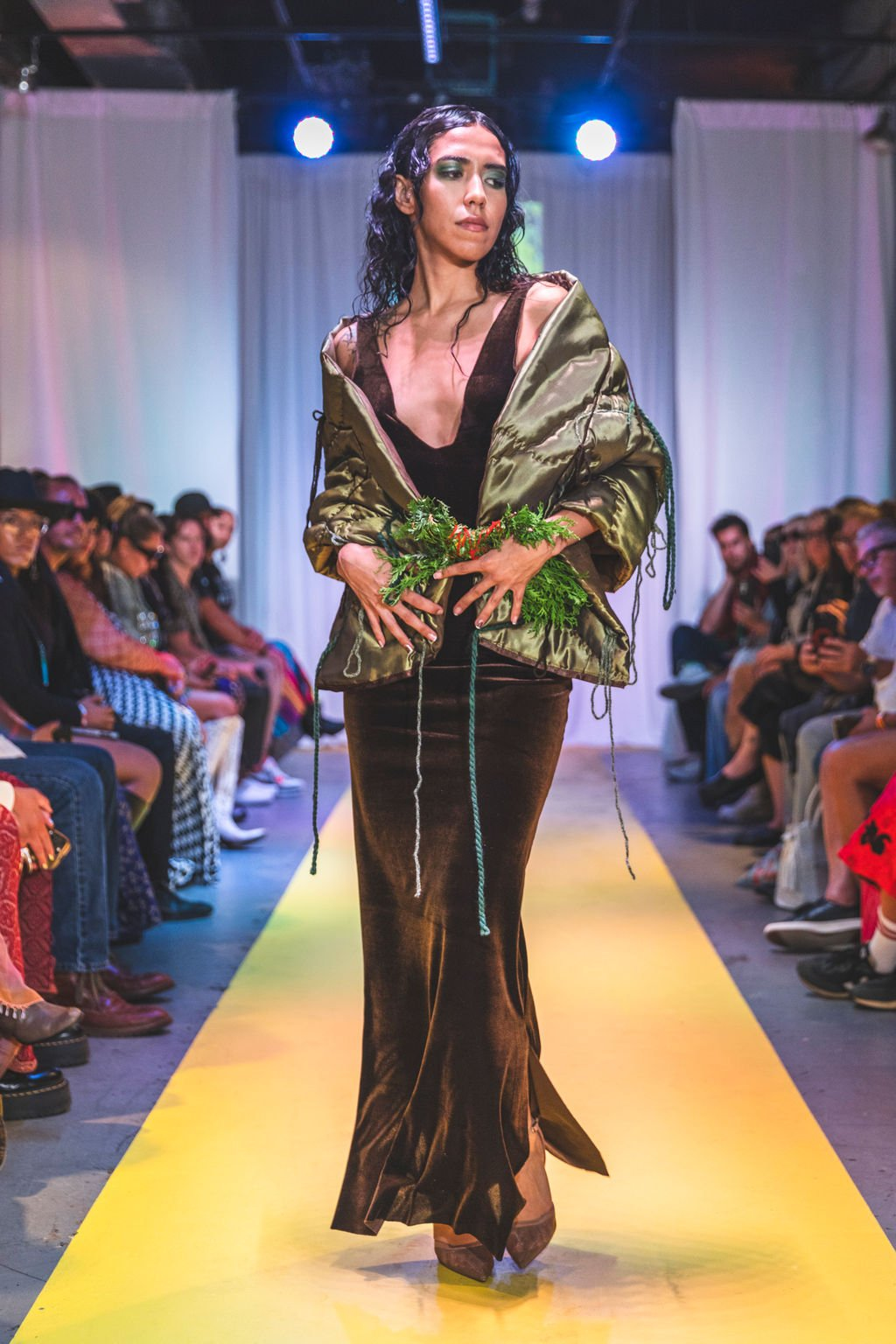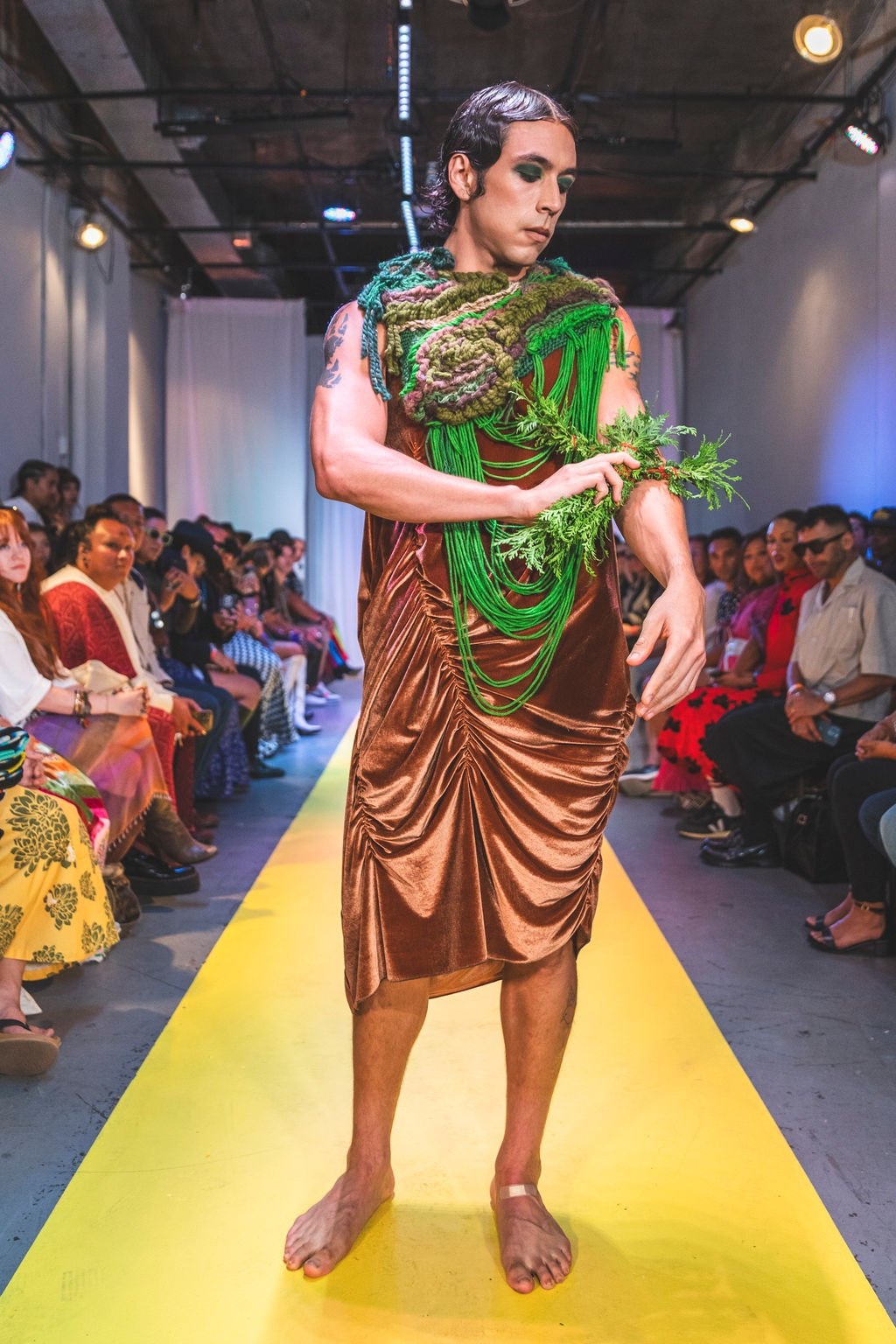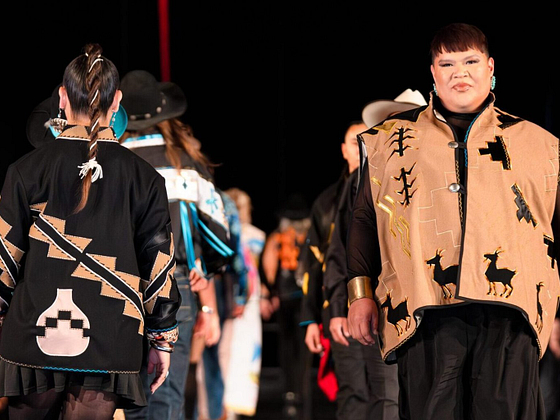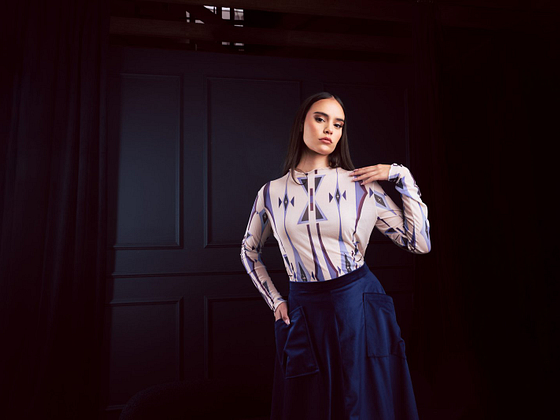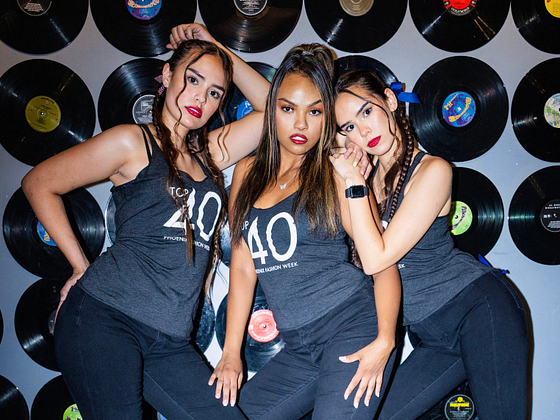Last month, as New York Fashion Week descended upon Manahatta, sending fashion lovers scrambling to attend shows across the city, a quieter, more profound story was unfolding in the East Village: the inaugural Indigenous New York Fashion Week (INYFW). This historic moment, produced by Relative Arts NYC co-founders Korina Emmerich and Liana Shewey, offered a compelling counter-narrative, proving that the heart of fashion lies not in the pomp and pageantry, but in community, collaboration, and culture.
Addressing a crowd of roughly 80 guests at the Grace Exhibition Space, co-founder Korina Emmerich declared, “This isn’t a takeover, it’s a take back.” This powerful “land back” sentiment was on full display throughout the weekend. It was seen in the T-shirts worn by crew and attendees that proudly proclaimed, “I Love Lenapehoking,” directly challenging the city’s commercialized “I Love NYC” slogan. It was also at the heart of the collections themselves, which demanded that mainstream fashion cease its long history of appropriating Indigenous designs and instead make space for these vital voices through genuine inclusion and partnership.
“The inaugural INYFW unites us at the center of the fashion ceremony, generously declaring, ‘Here are our gifts’,'” said Jason Baerg (Métis) of the fashion label Ayimach Horizons. “The fashion industry has always been aware of our presence; now it can no longer appropriate our work.”
Fellow presenting designer, Jeremy Arviso (Diné/Hopi/Akimel & Tohono O’odham) of Original Landlords, echoed that sentiment: “We’re a force to be reckoned with and we know it. There’s a lot of responsibility with being the first in anything, but I know we’ve all been working our entire lives for this. Nobody is going to give us a platform so we have to build it ourselves.”
Despite being a smaller production, the platform the Relative Arts team built was no small feat. It was a significant undertaking made possible with the help of community members, artists, and volunteers:
“One of the most rewarding things about putting on INYFW was how relatively accessible it was. We didn’t charge the designers to show and we kept ticket prices low. We didn’t allow colonial borders to define Indigeneity with our roster of talent. INYFW was produced for and by our community, and I think we succeeded in proving that we are capable of creating at a high caliber,” said INYFW co-founder, Liana Shewey.
The three-day event hosted 25 shows, bringing together Indigenous creatives from across South and North America. The weekend kicked off with a jewelry showcase featuring pieces from designers such as Copper Canoe Woman (Nuučaan̓uɫ & Haíłzaqv), Joe Big Mountain (Mohawk/Cree/Comanche), and El Techichi Jewelry (Ñuu’savi).
Beyond the runway, the schedule was filled with other activations, including designer meetups, music-filled afterparties, and a pre-event fashion panel at the Museum of Modern Arts (MoMA). The event also drew notable guests such as fashion PR expert Kelly Cutrone, Ralph Lauren Artist-in-Residence Naiomi Glasses, musical artist Mato Wayuhi, and a surprise visit from Indigenous supermodel and activist, Quannah Chasinghorse.
The platform built by the Relative Arts team was clearly a success in bringing voices together, but the ultimate declaration of the weekend resided in the fashion itself. With 25 designers presenting over three days, the sheer volume of creative output was a testament to the current state of Indigenous fashion.
While it’s impossible to cover every powerful moment, the collections demonstrated a breathtaking scope of artistry that served as a visual rebuttal to mainstream appropriation. Every stitch, bead, and silhouette held centuries of stories, uniting the designers in an insistence on self-determination and cultural authority through the mode of slow fashion.
The following standout presentations centered around three distinct pillars that encapsulated this “take back” narrative: The Storytellers focused on traditional textile mastery and elevated craftsmanship, The Advocates showcased culturally-infused high streetwear with political undertones, and finally, The Sustainers highlighted ethical, land-based knowledge and practices.
The Storytellers
1. Ayimach Horizons
Jason Baerg (Métis) of Ayimach Horizons continued his rich narrative that began at Native Fashion Week Santa Fe, transforming ancestral knowledge into wearable art. His collection was a careful study in honoring the North, the element of Air, and the color White—all of which was captured in the ebb and flow of a collection that juxtaposed soft and hard elements through sculptural, intricate cuts and asymmetrical blocking,
2. JG Indie
Jolonzo Guy-Goldtooth (Diné) of JG Indie provided a masterful demonstration of contemporary tailoring. In collaboration with Teton Trade Cloth, JG Indie showcased one-of-a-kind pieces where traditional wear met urban Indigeneity, rooted in Diné motifs and silhouettes. Crafted primarily from trade wool, cotton, and satin, the collection used subtle accents of concho studs and “masani” accessories to affirm that the most classic, finely crafted garments are themselves powerful cultural narratives.
3. Queena Ribbon Designs
Tina Bradley (Haudenosaunee) of Queena Ribbon Designs presented a visual narrative of motherhood and femininity. Her collection featured ensembles made of Teton Trade Cloth fabrics and suede. A stunning feathered cape symbolized protection while a skirt with monarch butterfly graphics represented transformation and the sacred journey of life.
The Advocates
1. Original Landlords
Known for his thought-provoking branding, Jeremy Arviso (Diné/Hopi/Akimel & Tohono O’odham) of Original Landlords led this charge by reimagining Hip-Hop streetwear with a Native twist. His collection featured vibrant oversized silhouettes and patchwork denim. The overall aesthetic celebrated cultural heritage with a strong Land Back sensibility, using motifs and graphics to assert Indigenous ownership and presence.
2. Red Clay
Red Clay, founded by Xade Wharton-Ali (Mescalero Apache), showcased an understated streetwear line designed to tell stories of resistance and displacement. With politically-charged graphics on hoodies and shirts, in a military-inspired color palette, his ensembles highlighted historical movements to foster pride in one’s heritage, aligning fashion with political awareness, showing that the principles of Indigenous self-determination are expressed through unwavering pride and defiant action.
3. Sky-Eagle Collection
Dante Biss-Grayson (Osage) of Sky-Eagle Collection displayed a vivid, maximalist Ready-to-Wear line on the INYFW runway. Utilizing silk, jersey, and recycled post-consumer materials, the collection tackled the appropriation of Indigenous identity head-on, with garments that embraced the historically derogatory “Merciless Indian Savage” moniker within bold, graphic prints. This reclamation was paired with pieces that raised awareness of the Missing and Murdered Indigenous Peoples (MMIP) crisis.
The Sustainers
1. Glasses Collection
Naiomi and Tyler Glasses (Diné) of Glasses Collection established a benchmark for slow fashion through ancestral craft. The duo showcased exquisite hand-woven garments and hand-crafted jewelry rooted in Diné culture. This dedication to traditional, labor-intensive processes, using materials drawn responsibly from their environment, asserted that true sustainability is a continuation of passed down teachings.
2. ALTRN8V
Taking a dark-romantic approach to the same ethos was Courtney Little Axe (Northern Cheyenne/Shawnee/Seminole) of ALTRN8V. She presented a provocative, punk and goth-infused collection of upcycled ready-to-wear. With Deer Lady as a guiding force, she transformed existing garments into bold new statements, proving that reverence for Mother Earth includes mindful sourcing and custom creations.
3. Native Nation Designs
Sabrina Lombardo (Rarámuri/Tigua) of Native Nation Designs featured dramatic, draped silhouettes in earth tones—velvets and deep copper hues accented by mossy greens and raw textures. Each design embodied the brand’s commitment to ethical practice and embracing all gender identities.
****
The inaugural Indigenous NYFW successfully reframed the fashion landscape by asserting Indigenous agency and creativity under the theme of a cultural “take back.” Across the three artistic pillars—The Storytellers, The Advocates, and The Sustainers—the event demonstrated that Indigenous fashion is not a trend, but an evolving standard. It operates outside the conventional industry timeline, creating its own space and influence.
For more runway and behind-the-scenes content, visit INYFW’s Instagram.
Editor’s Note: Featured image above is a Kreations by Kehala x Teton Trade Cloth design photographed by Veronica Huerta in the theater district of New York City.

